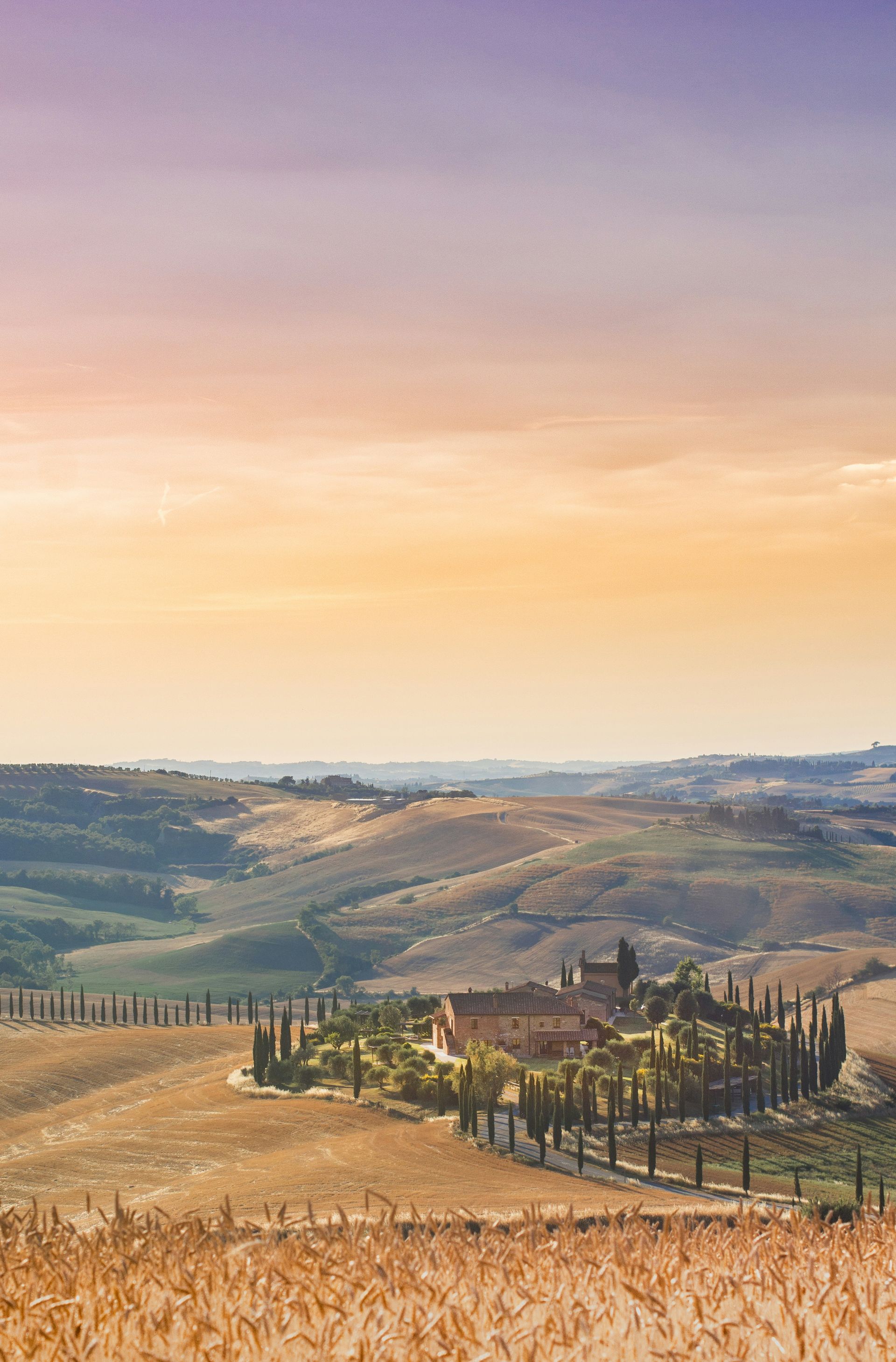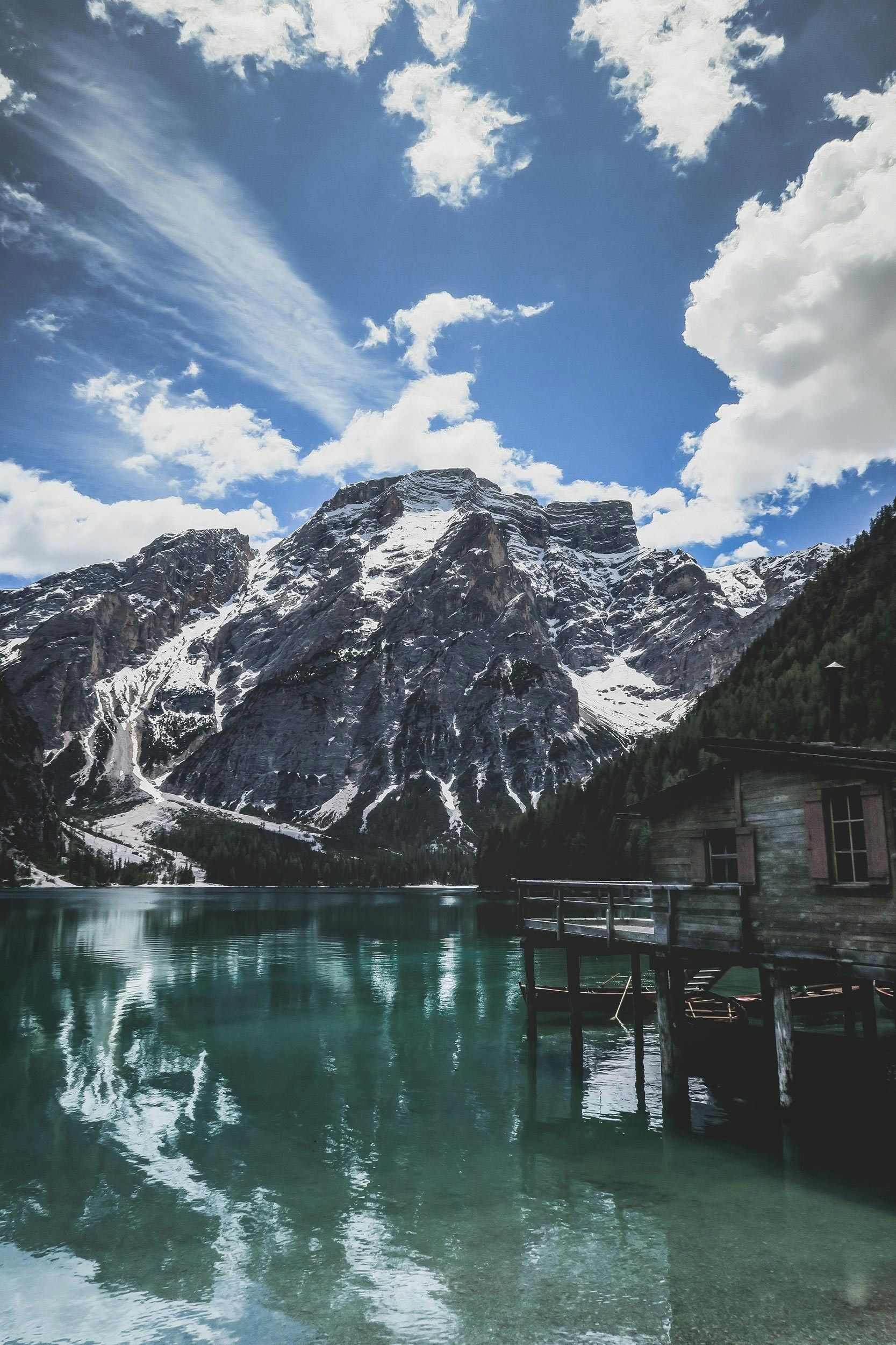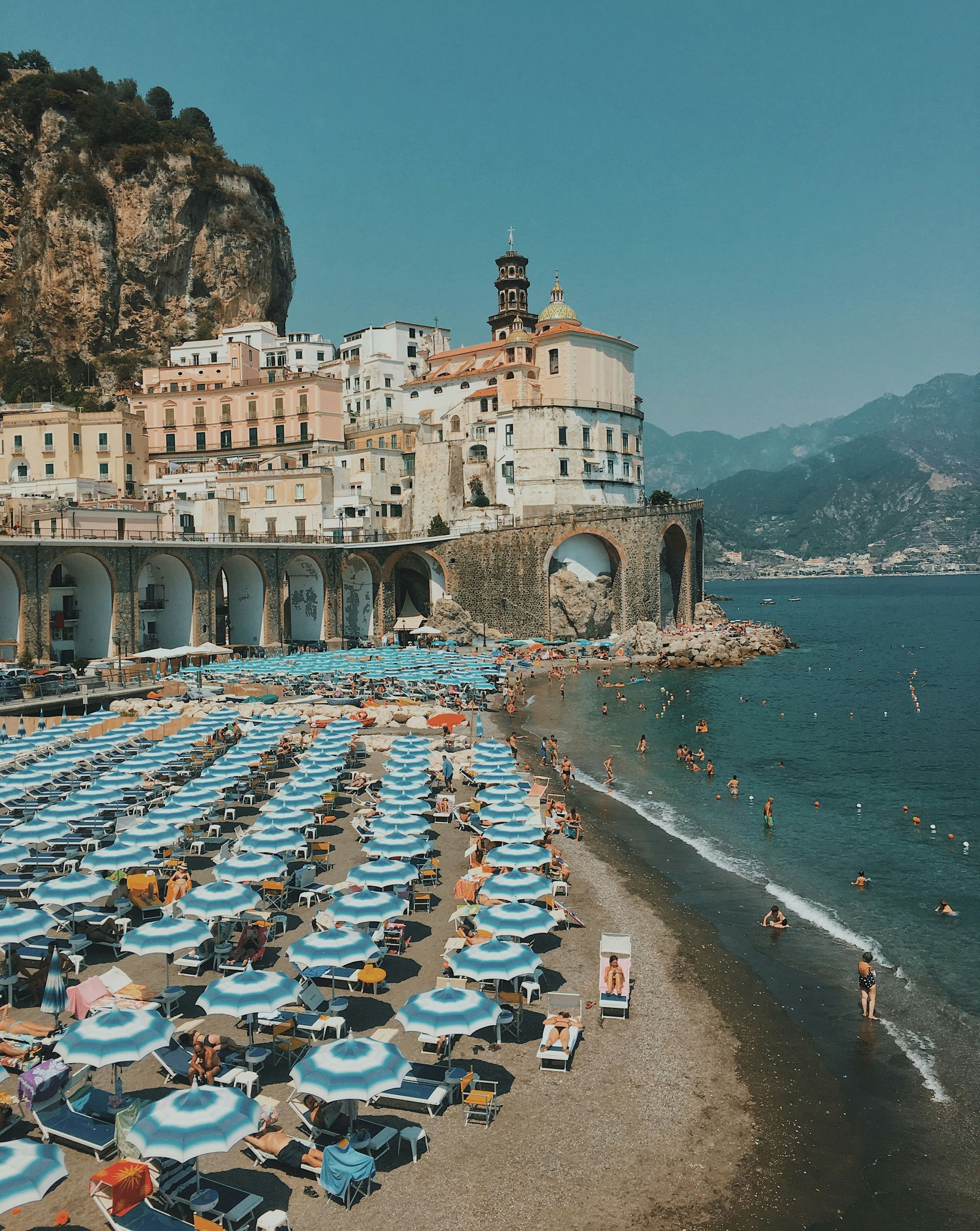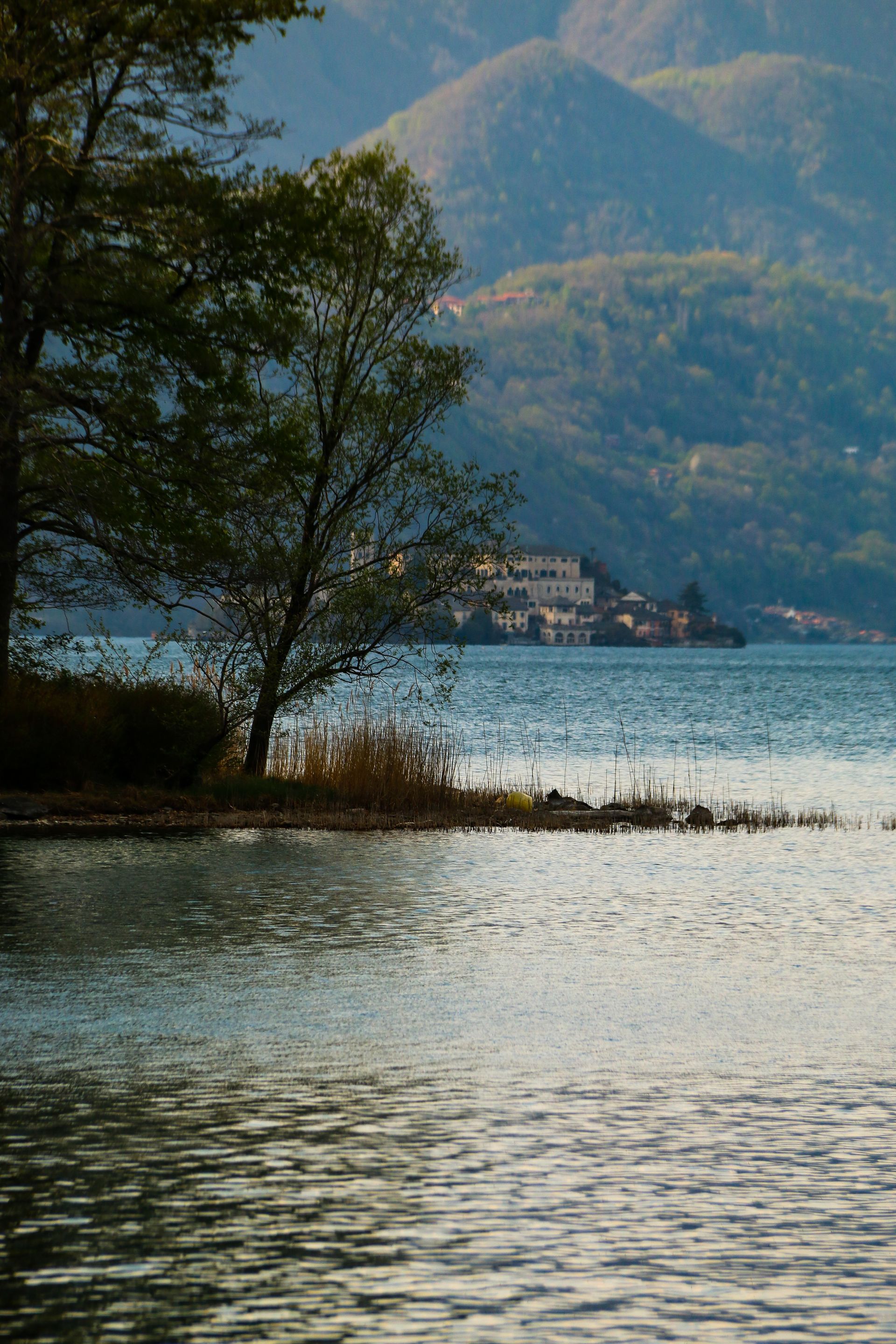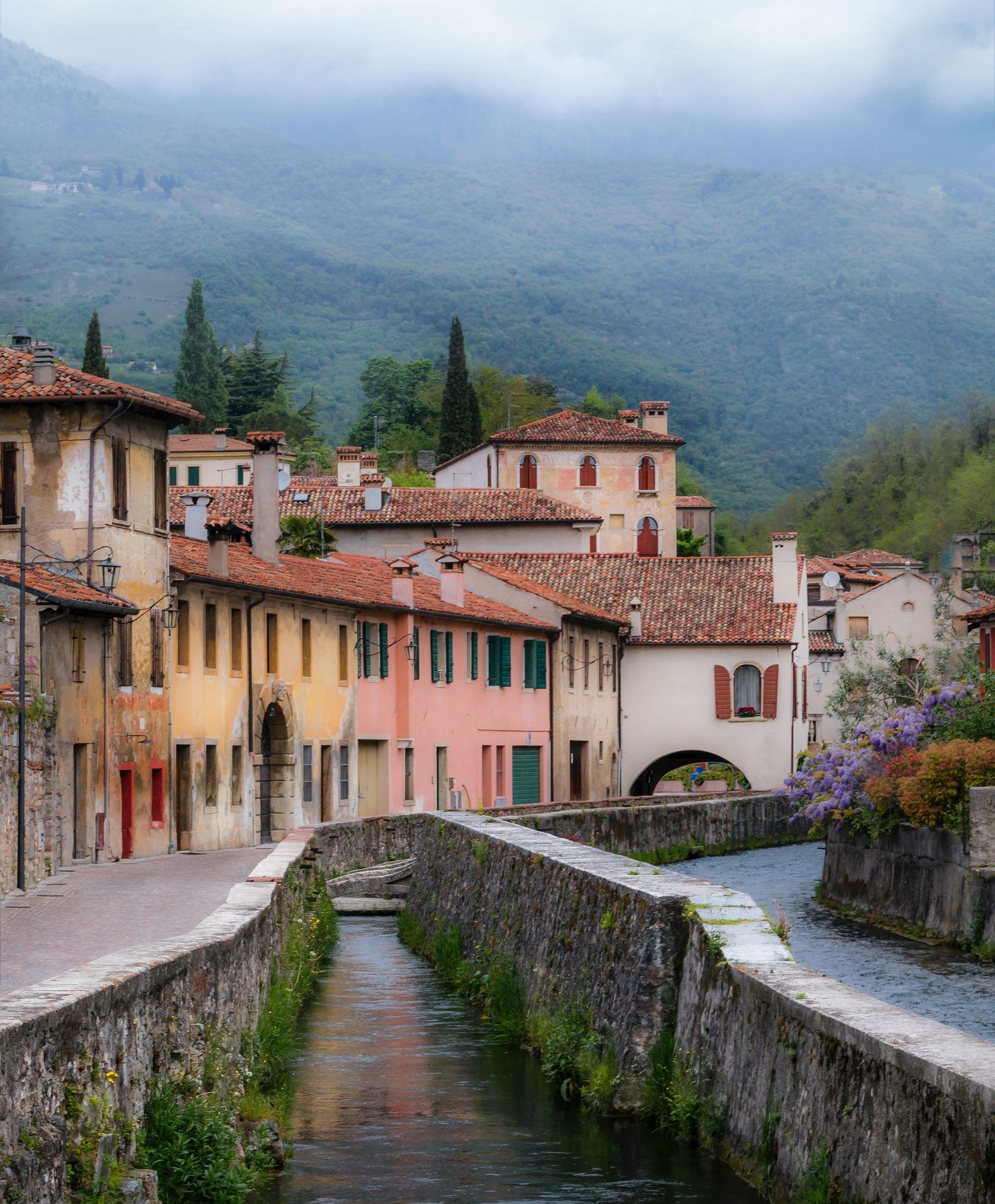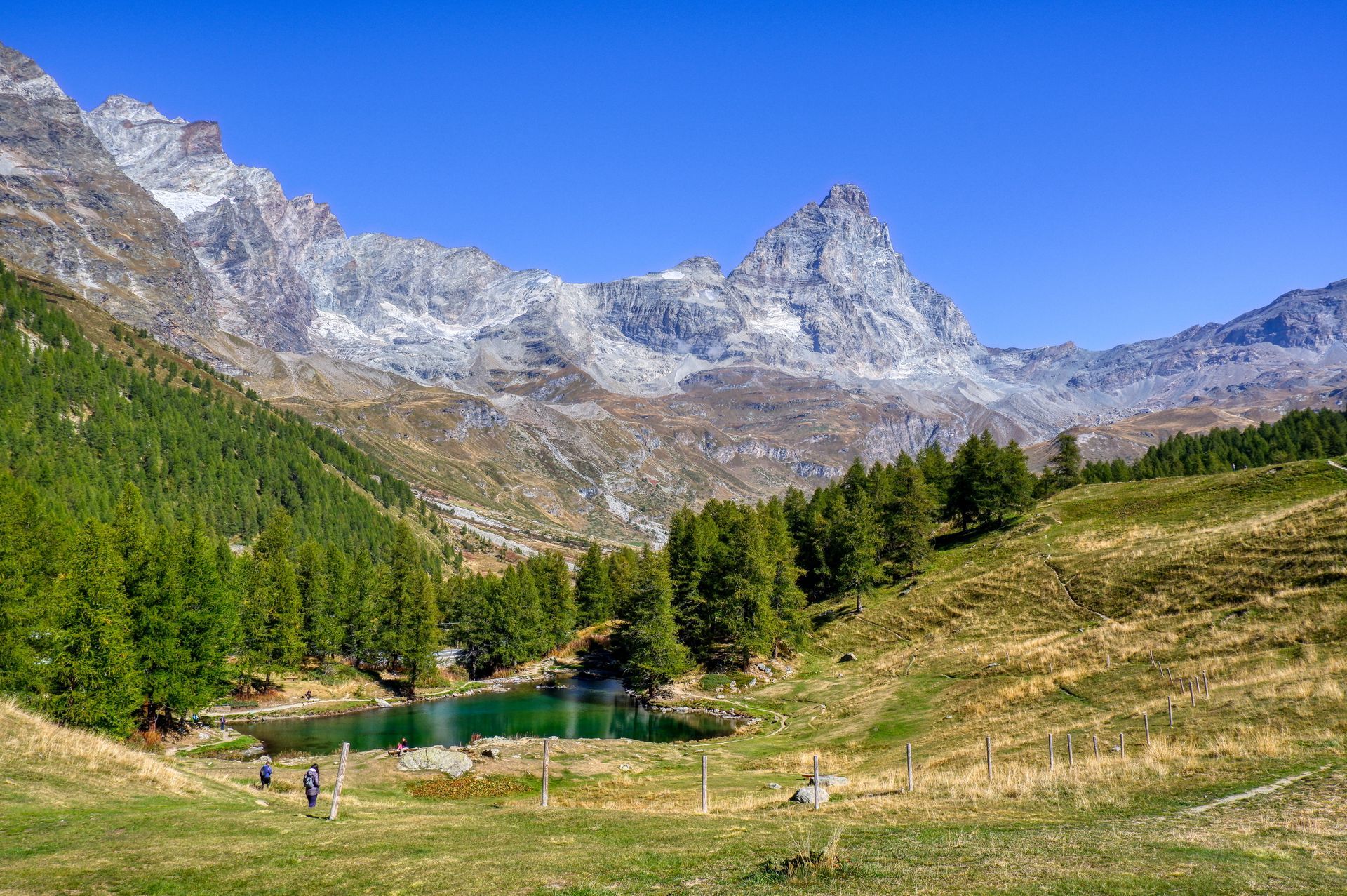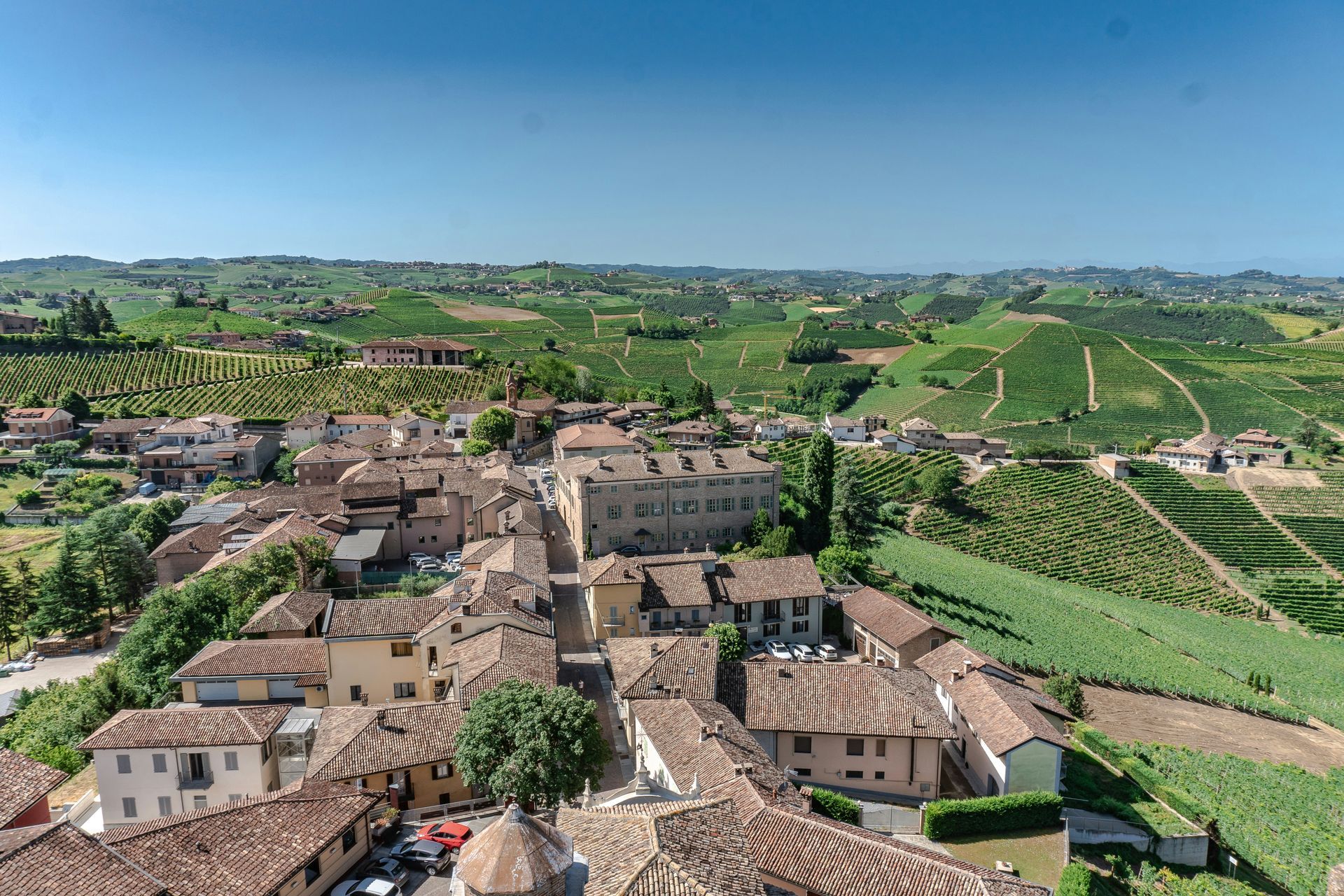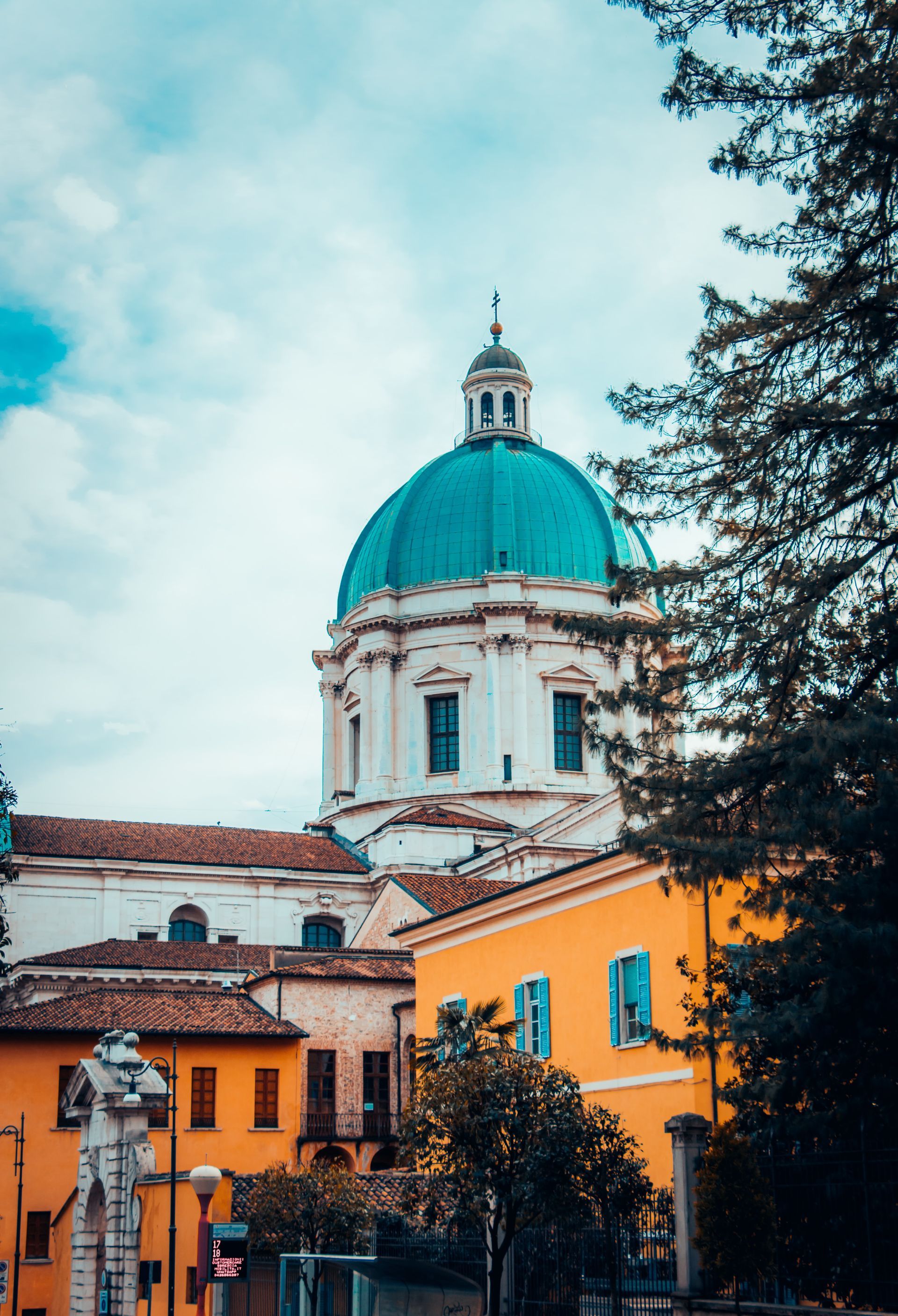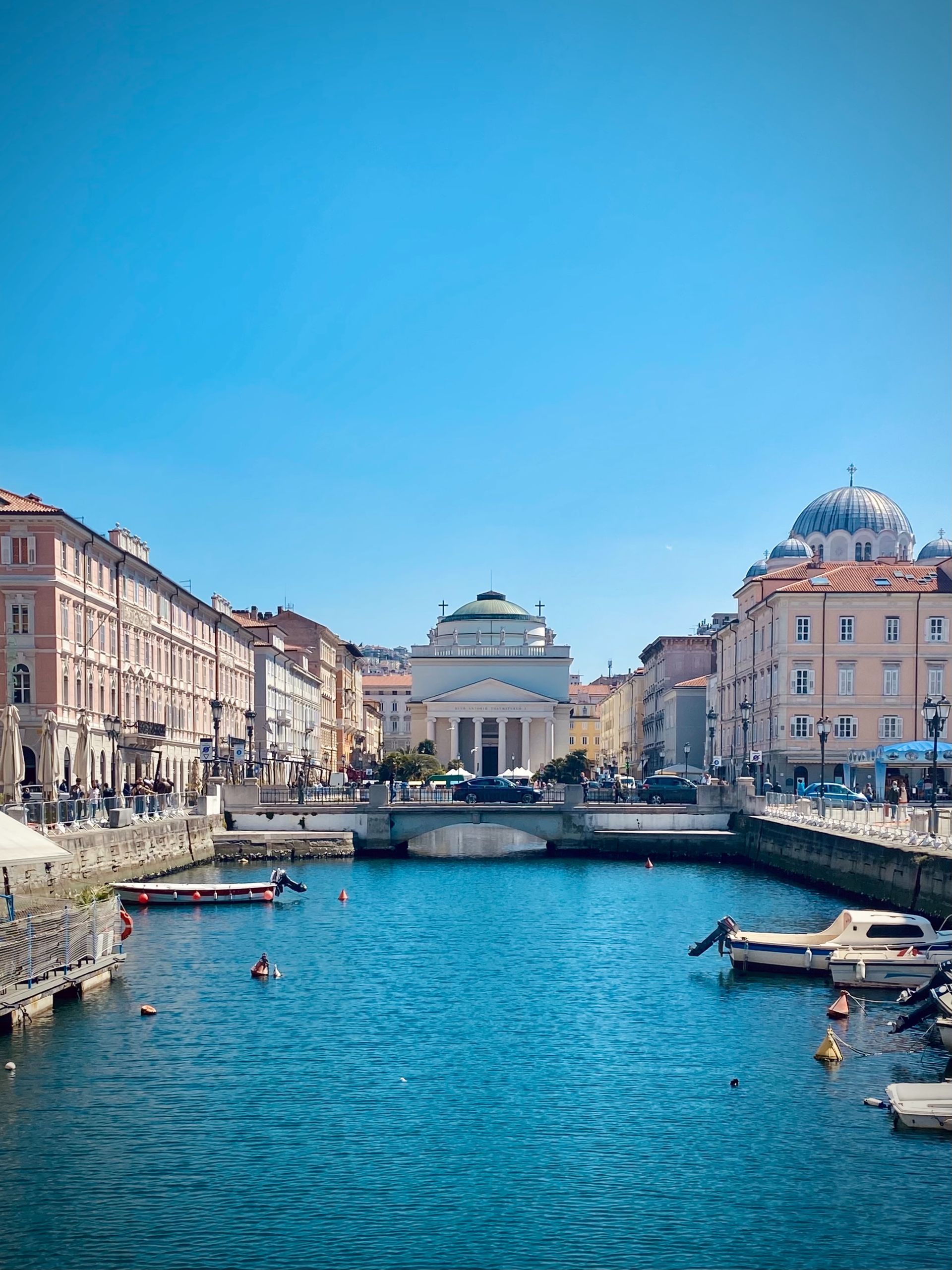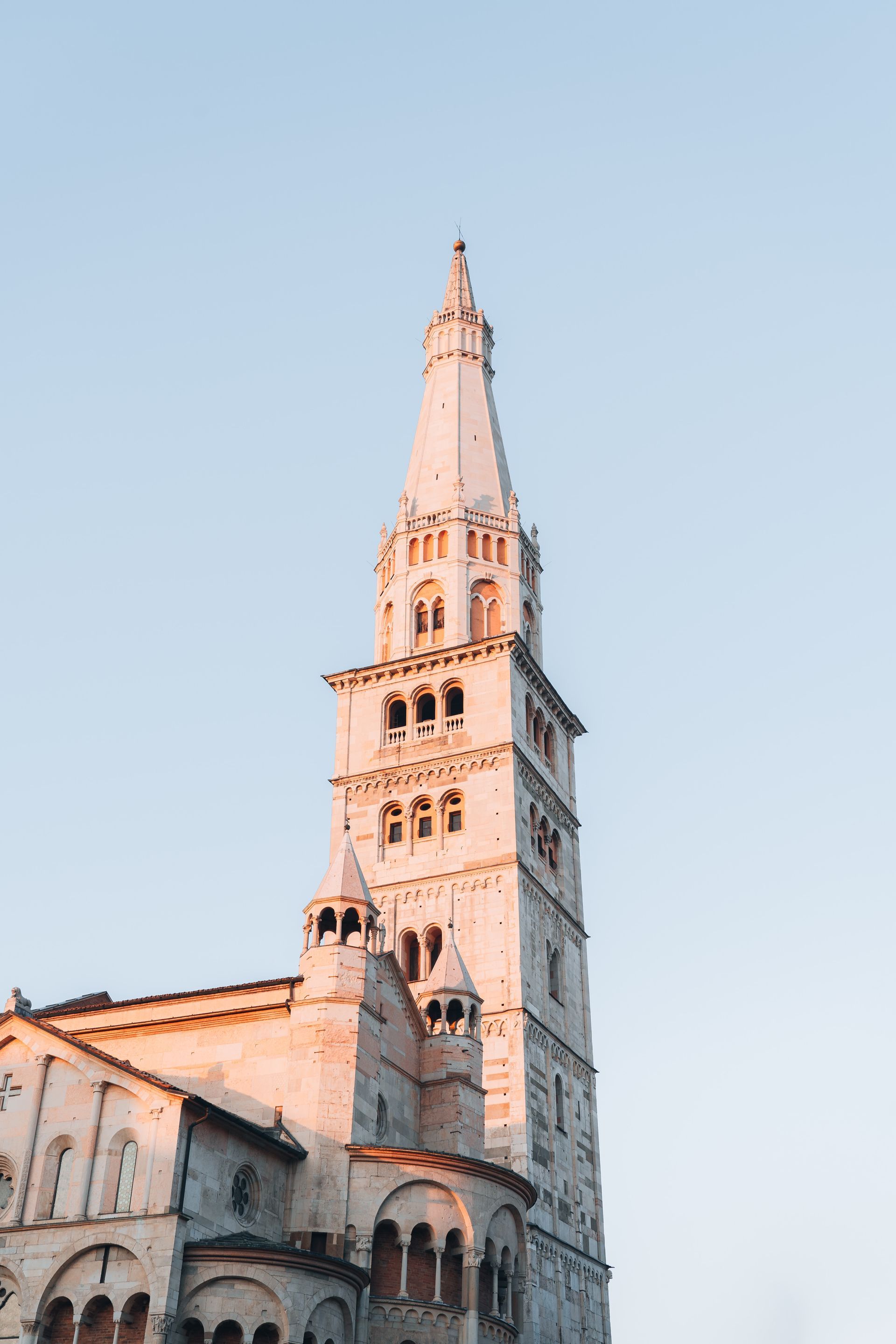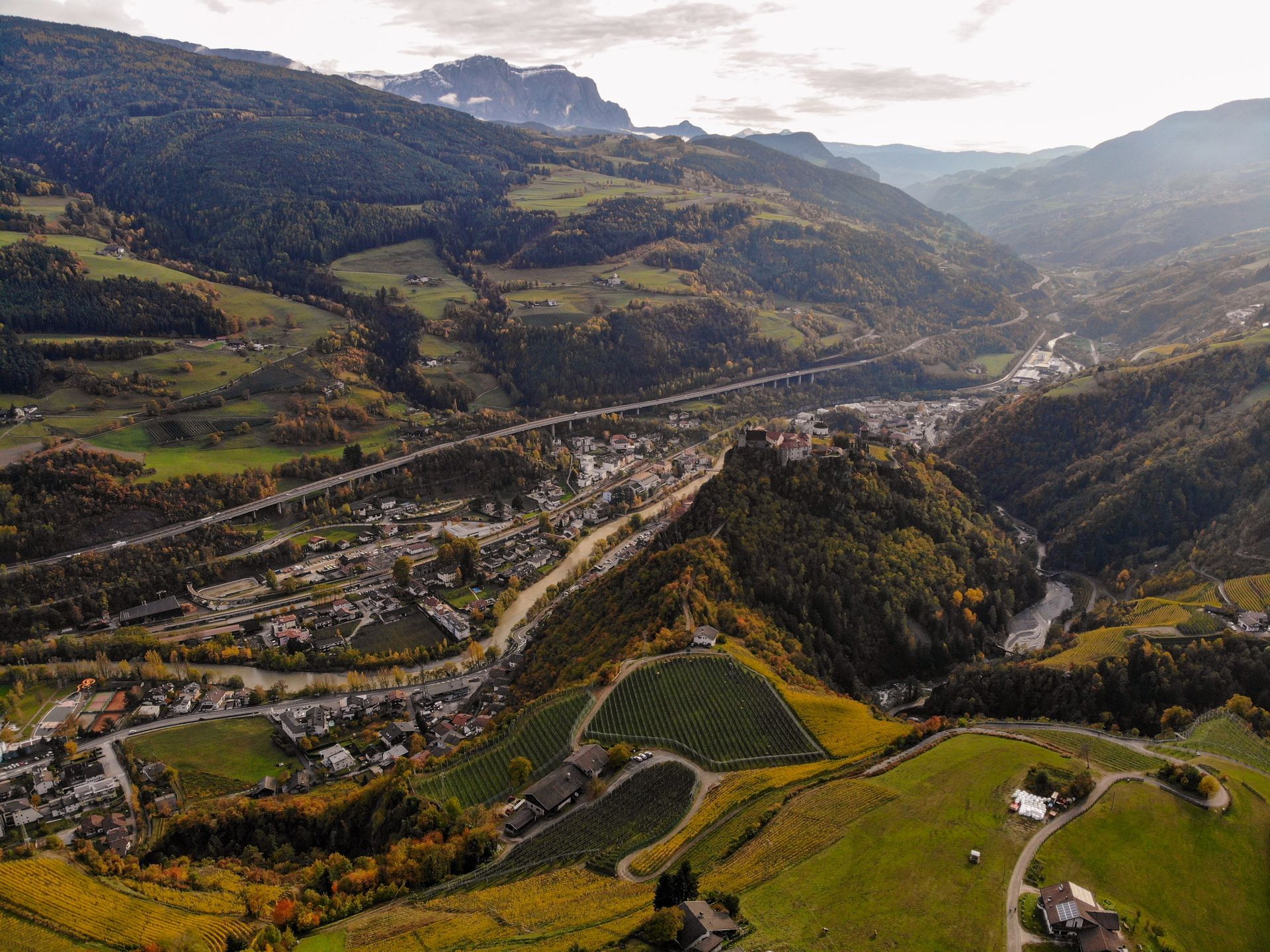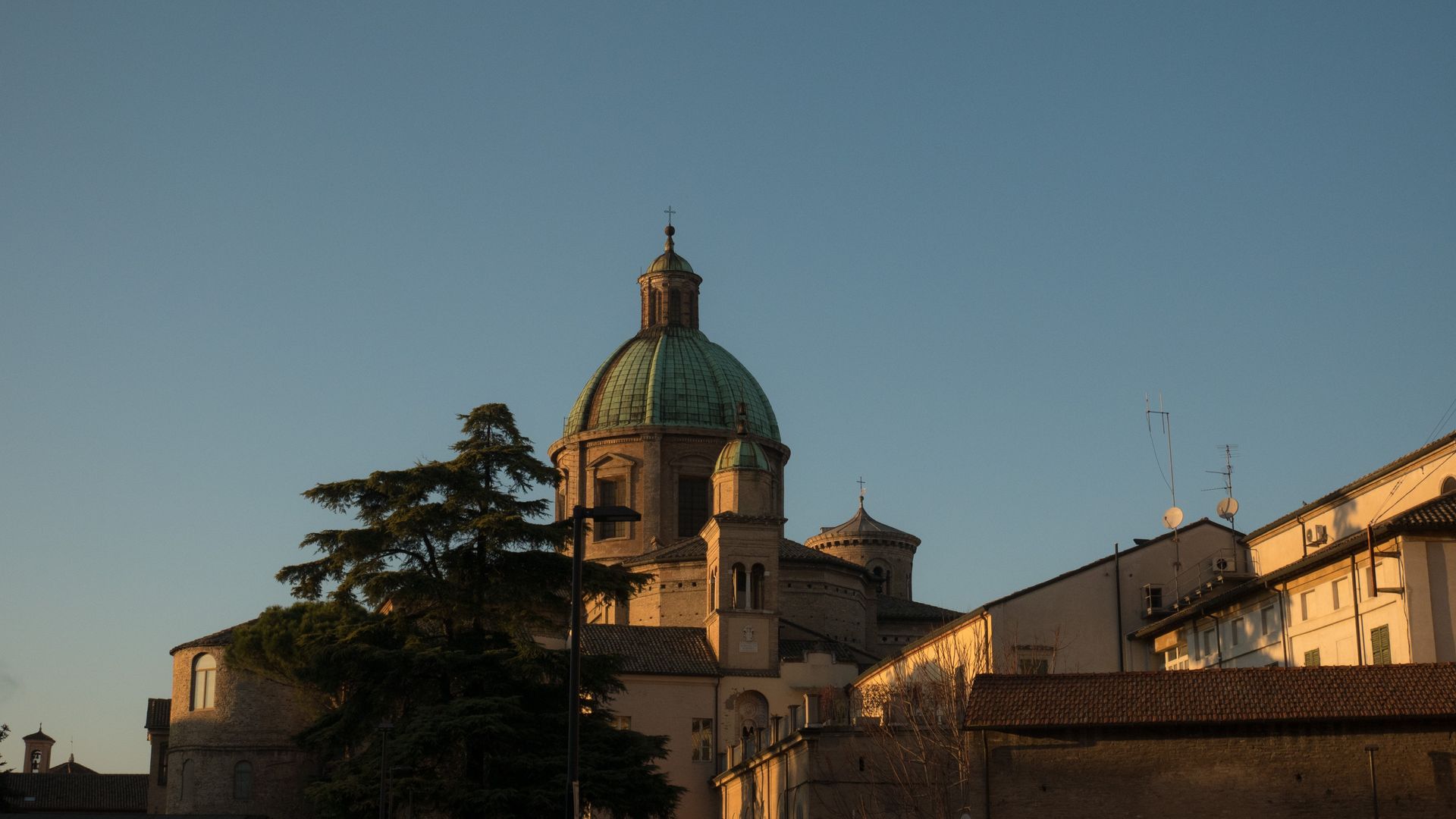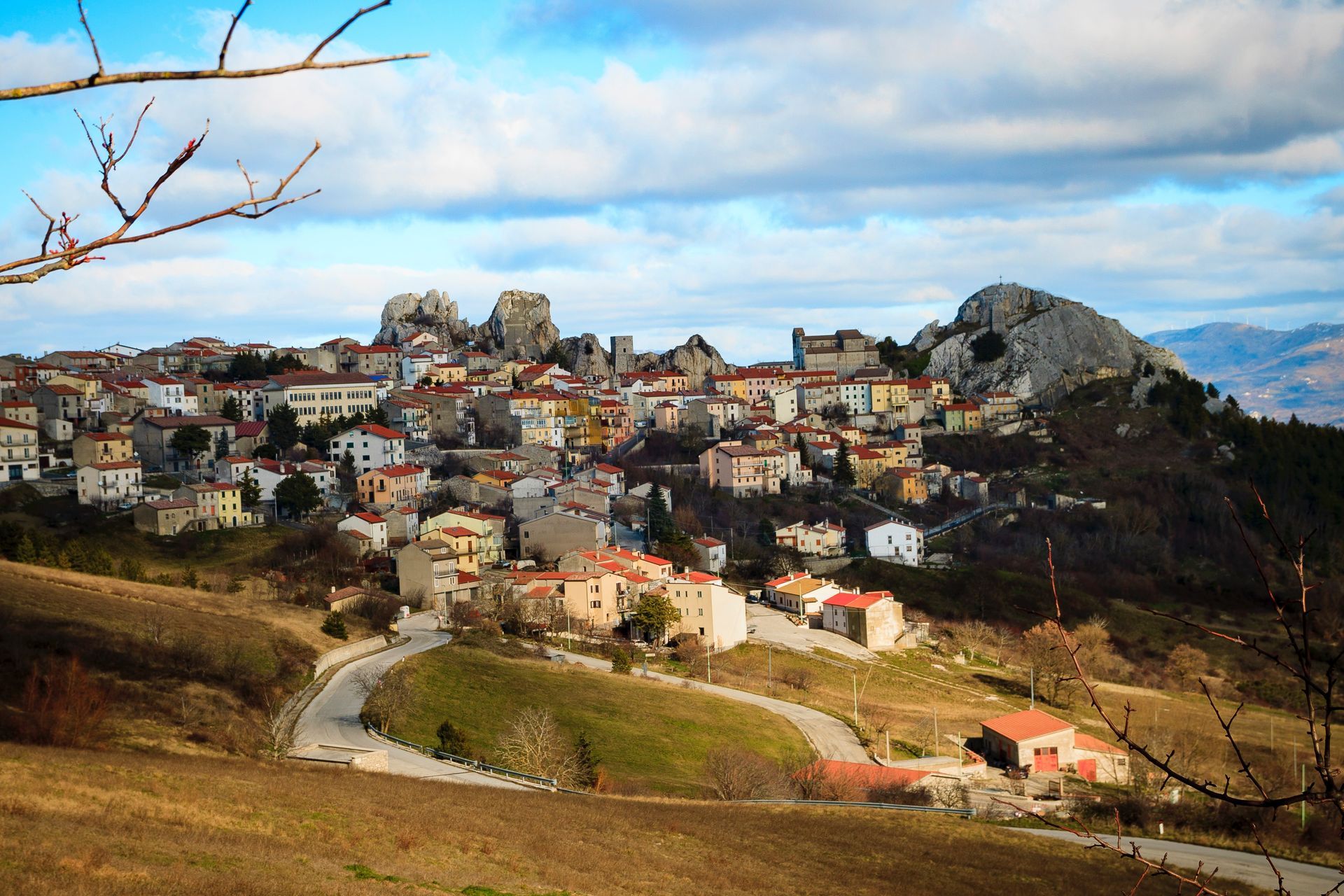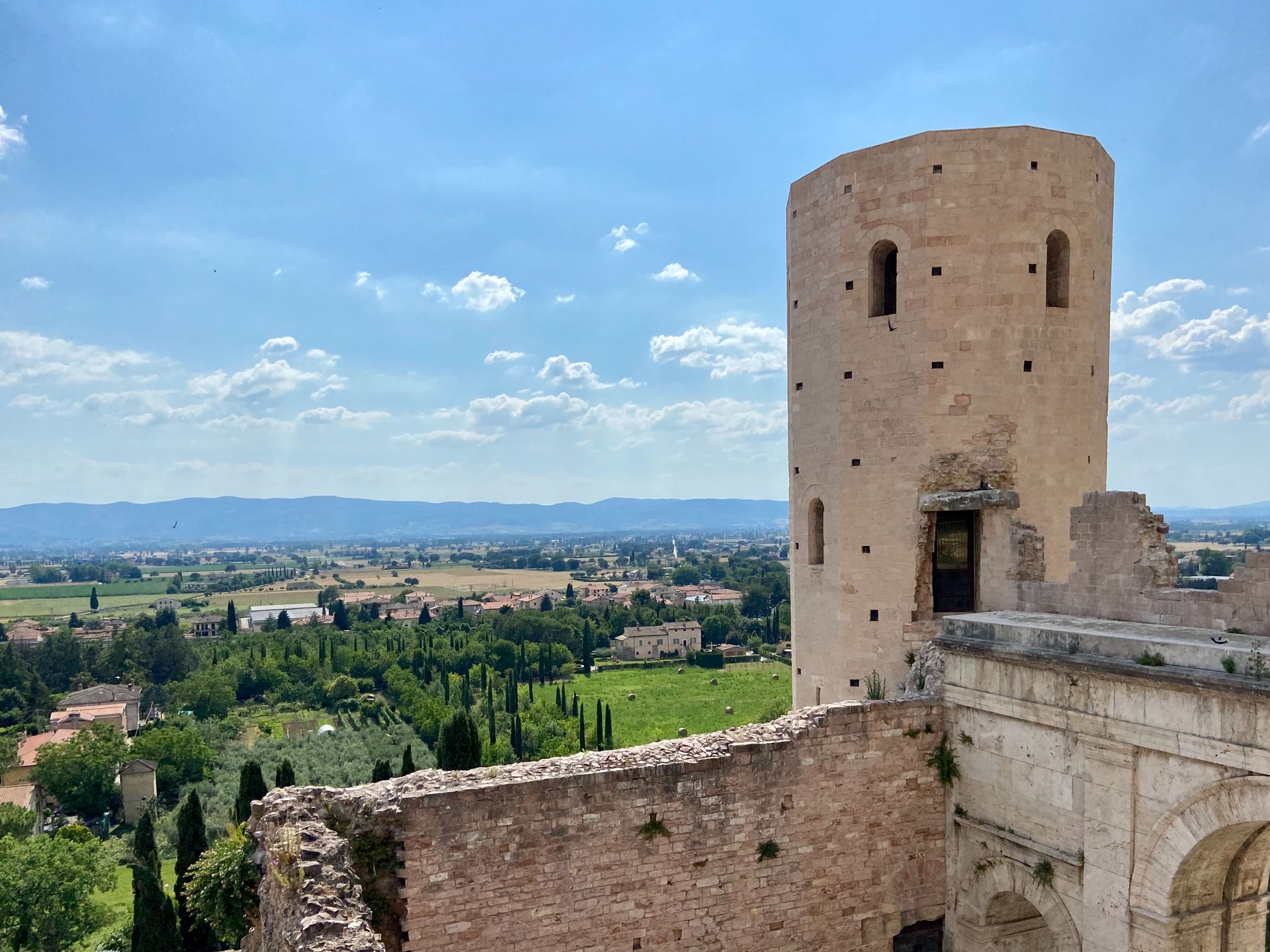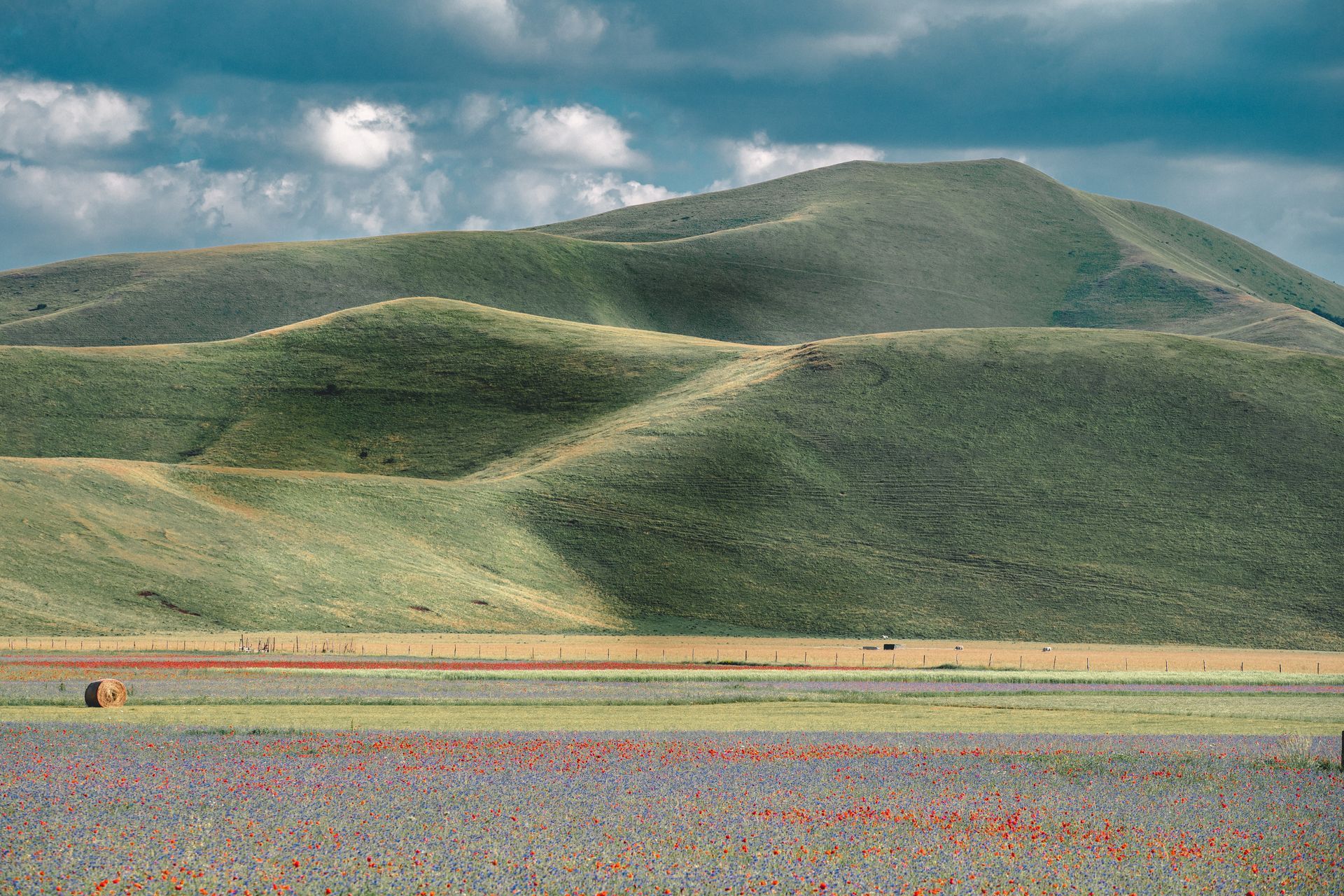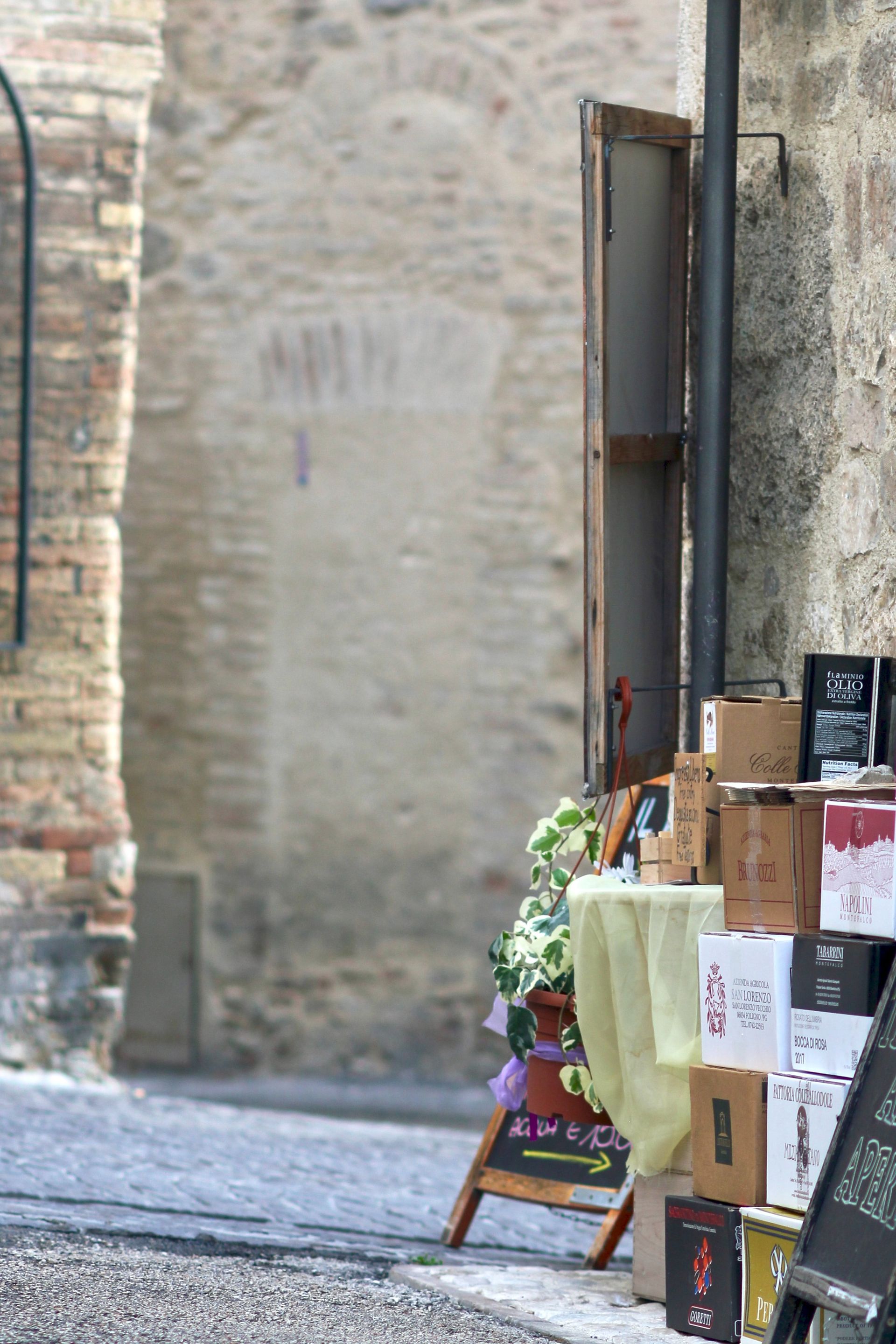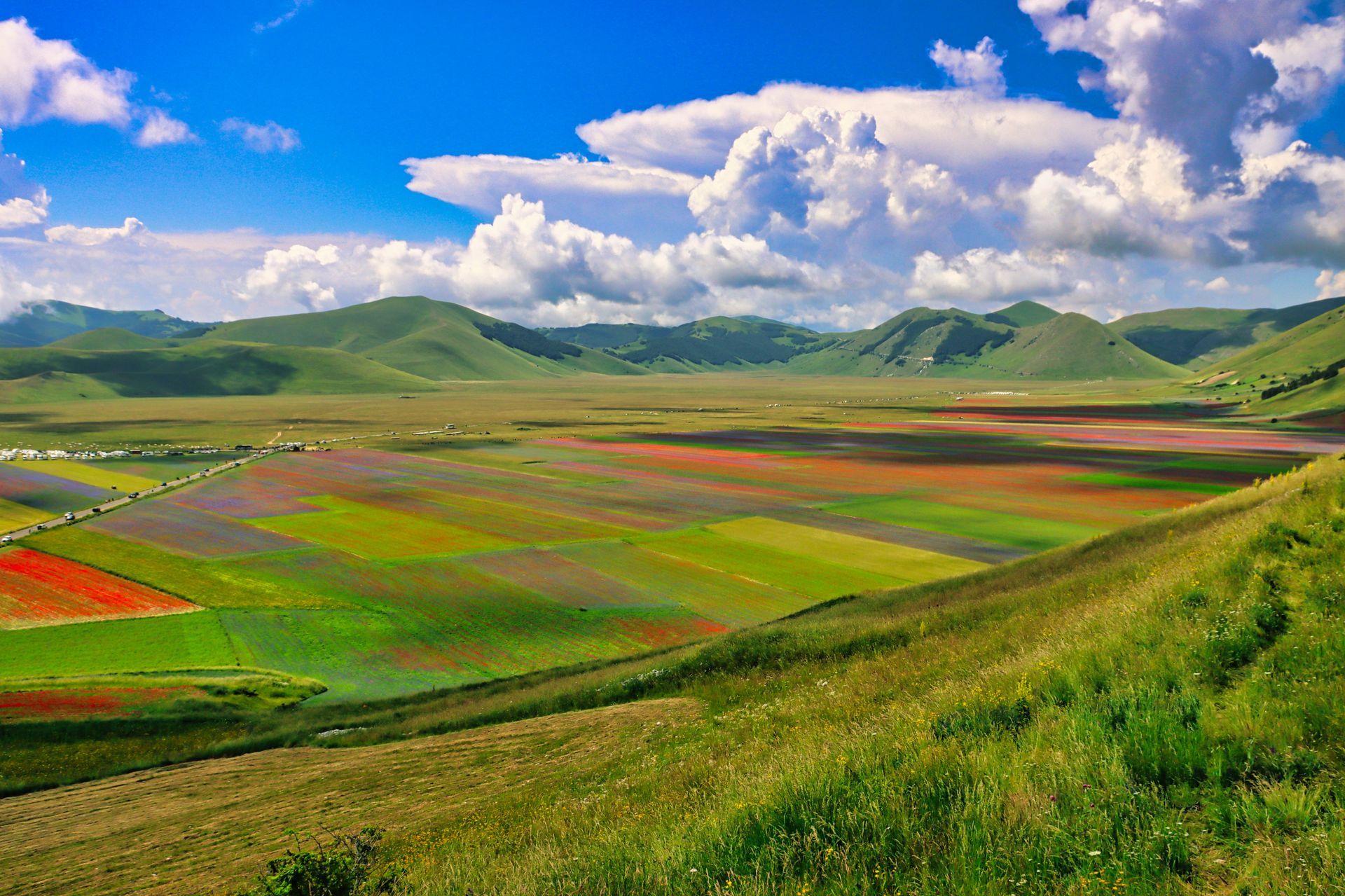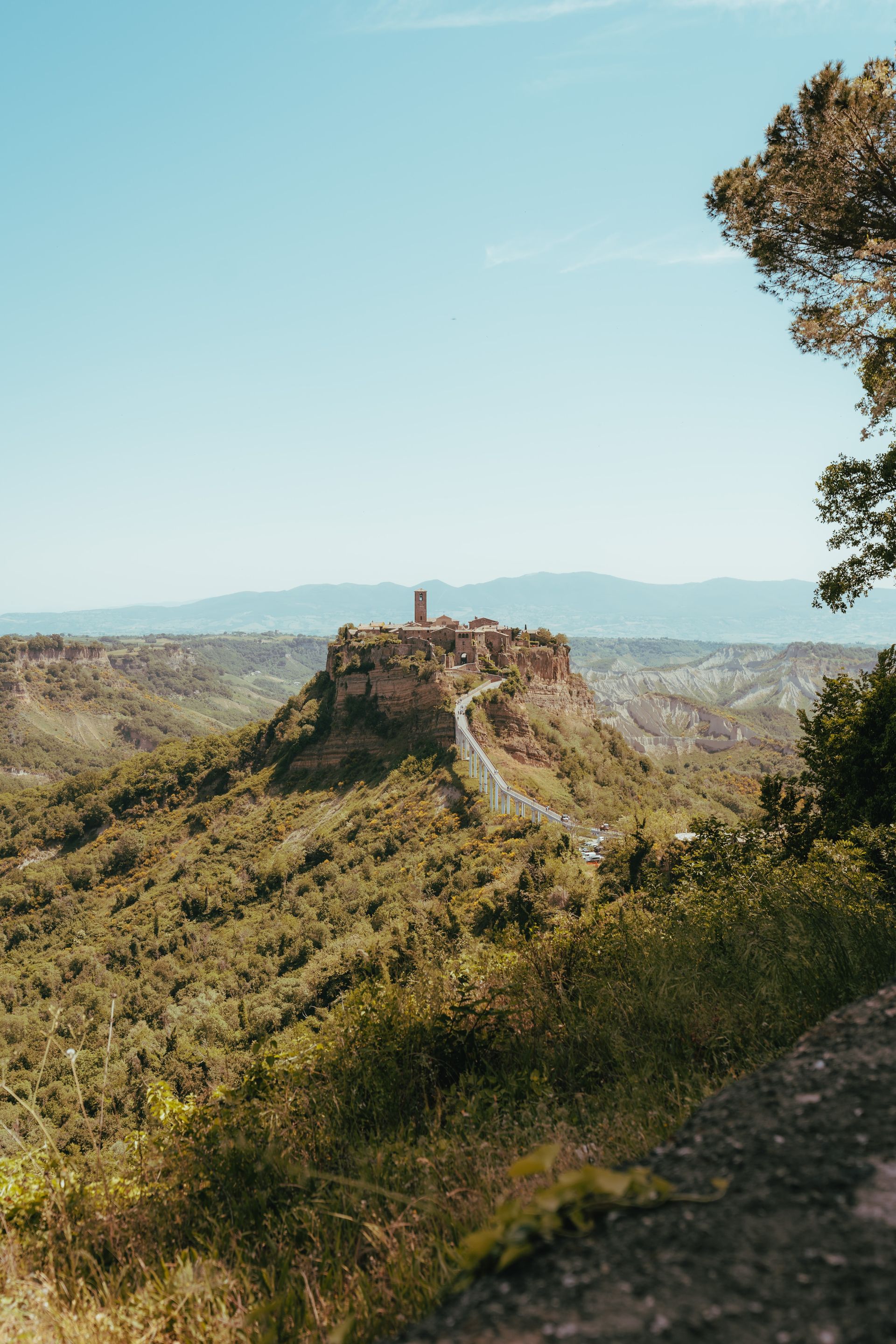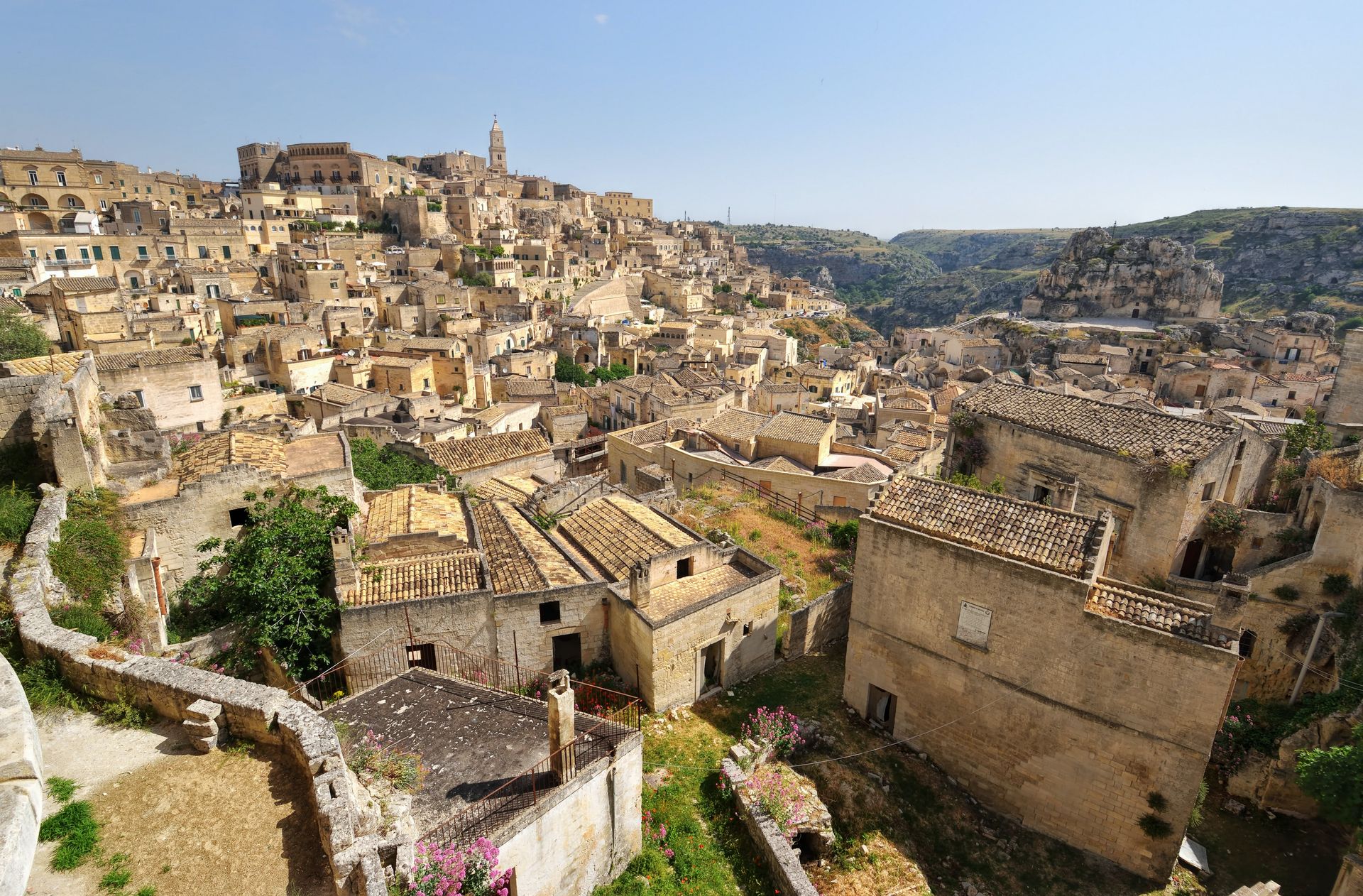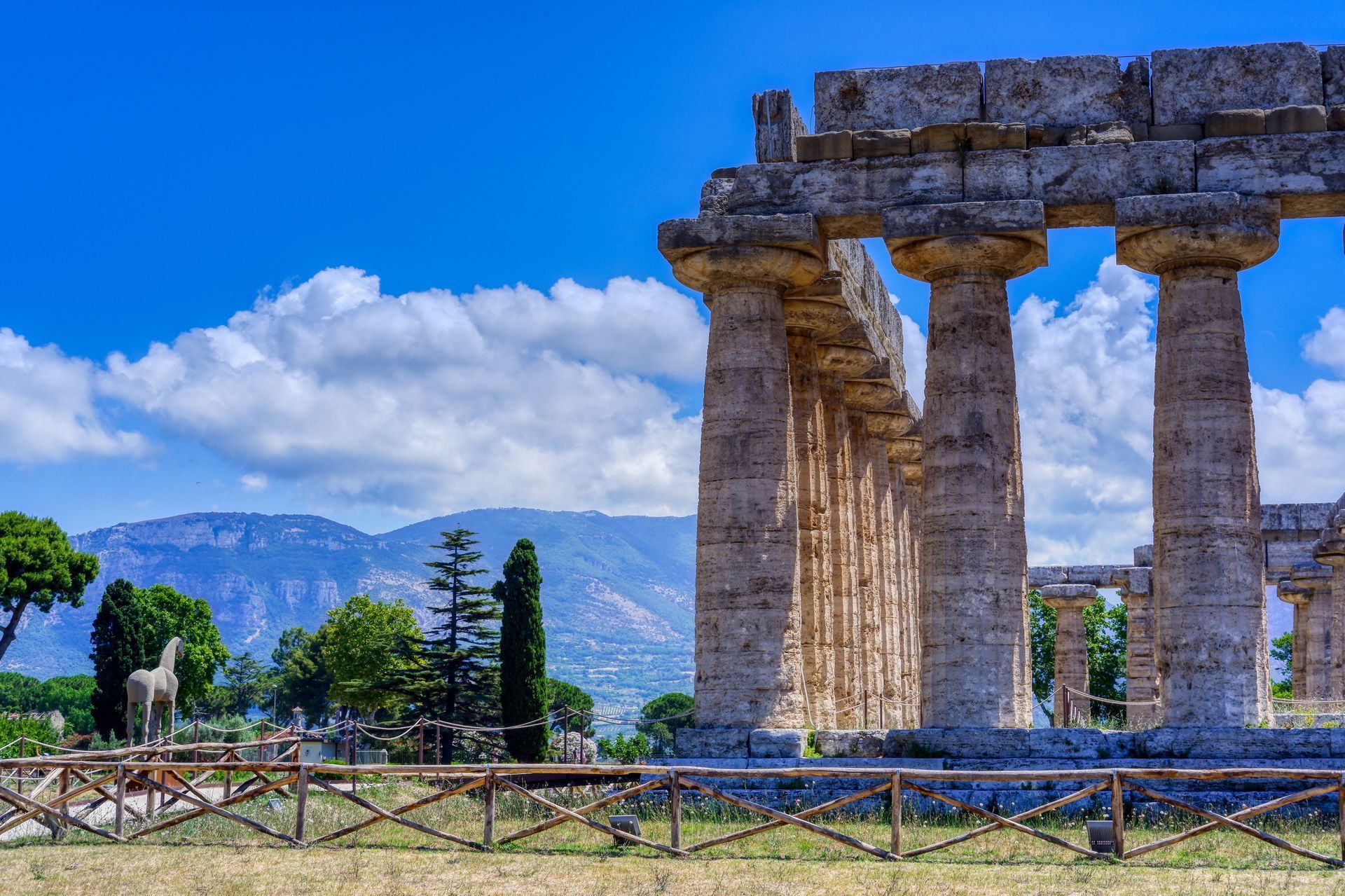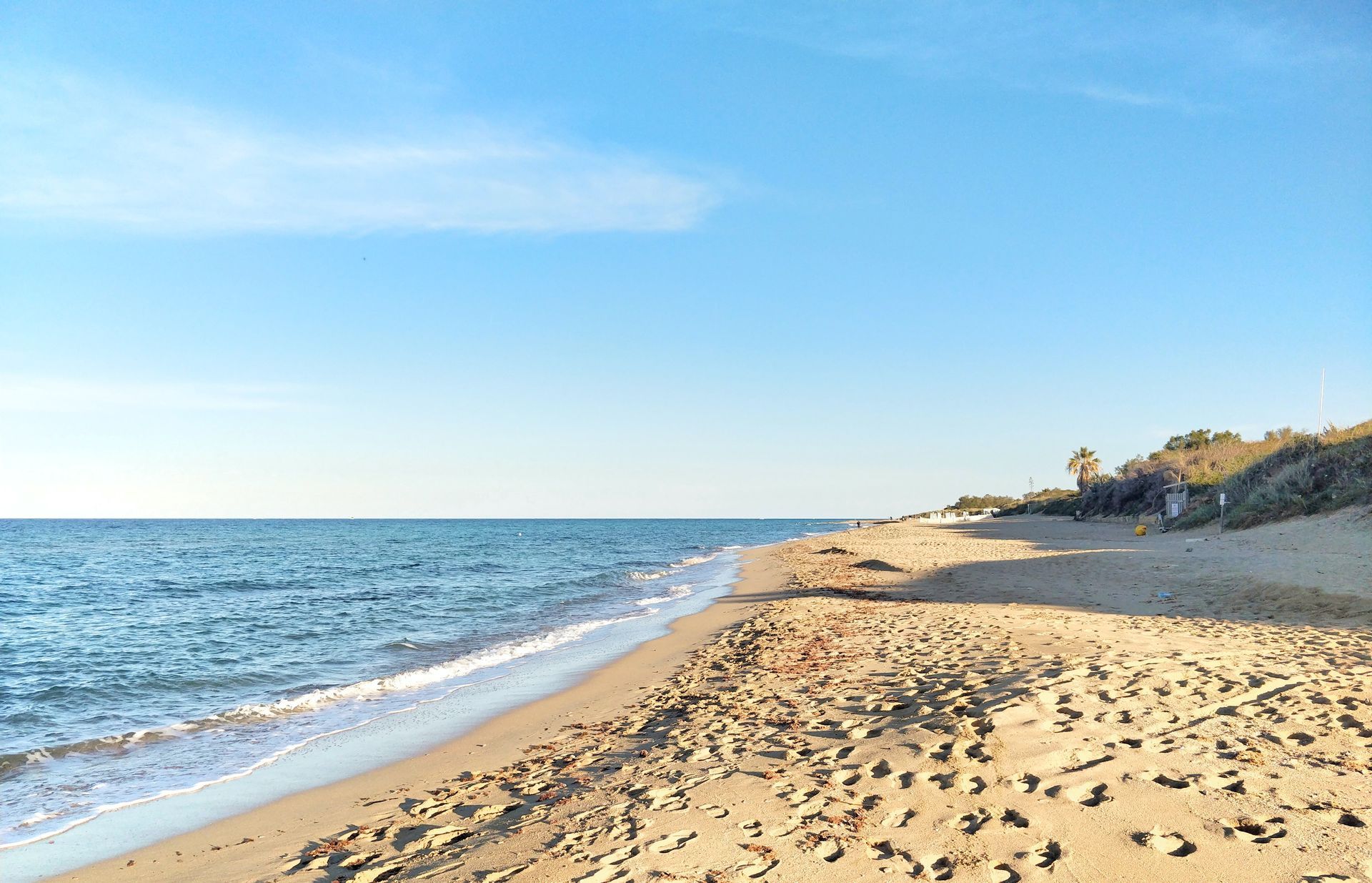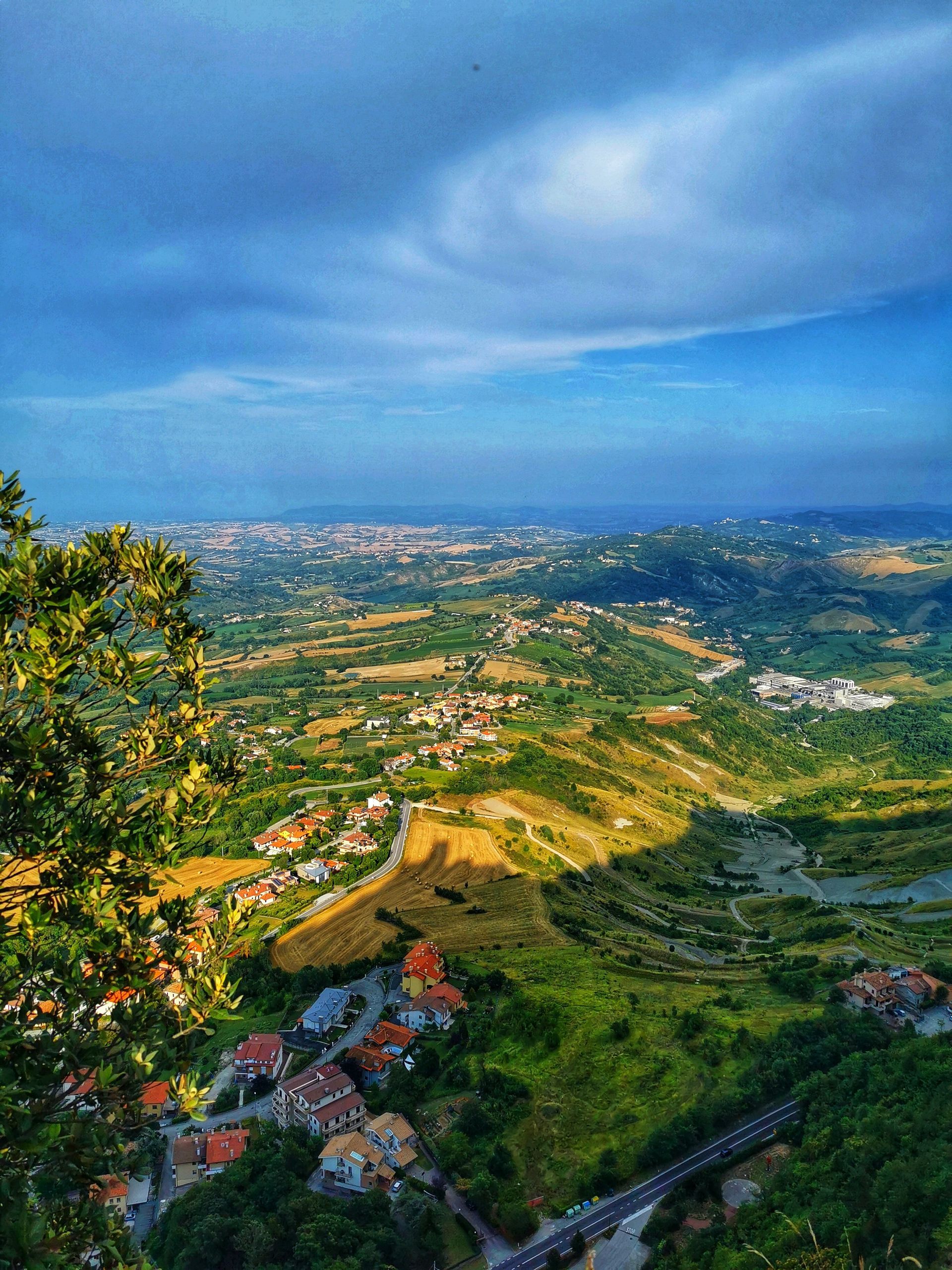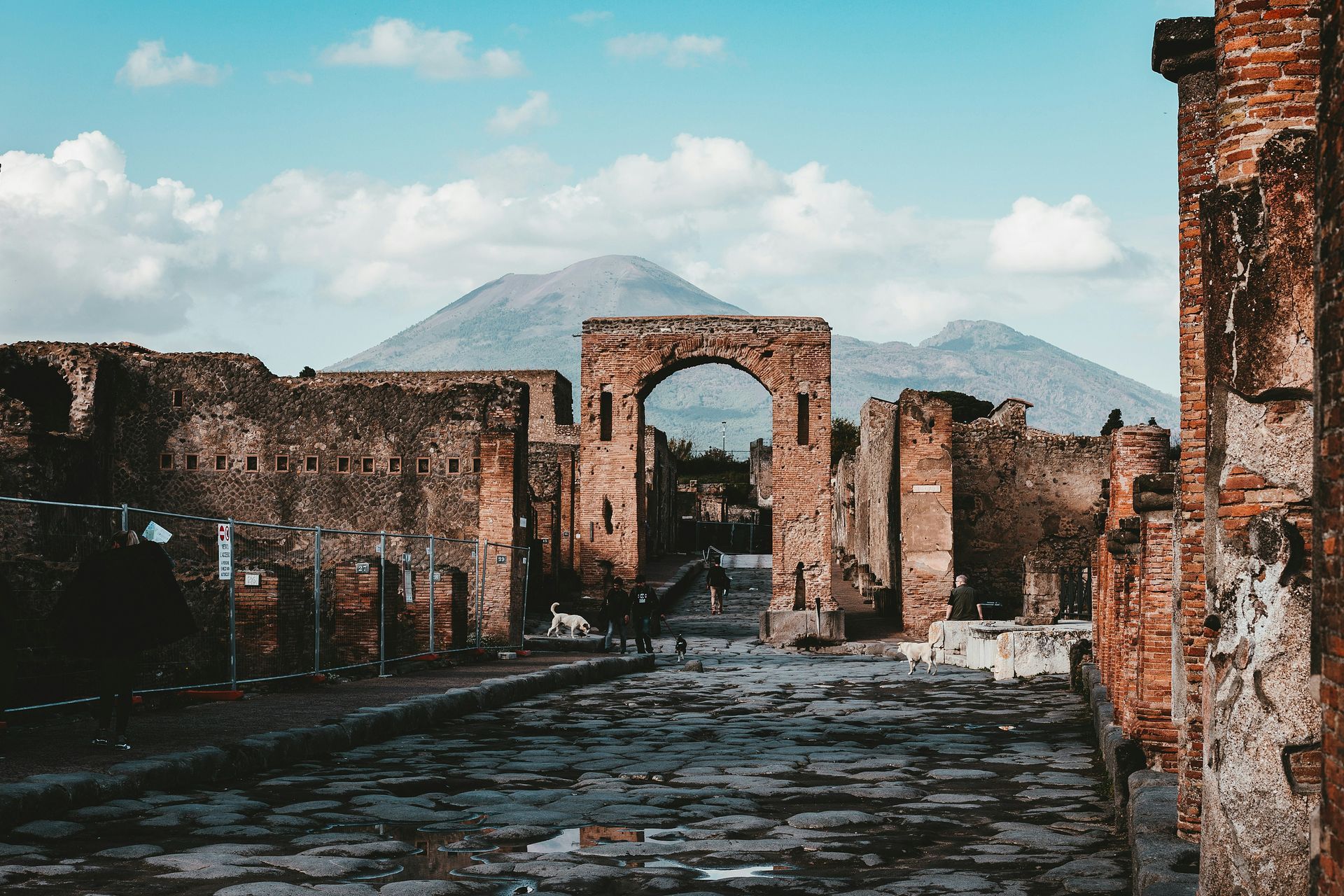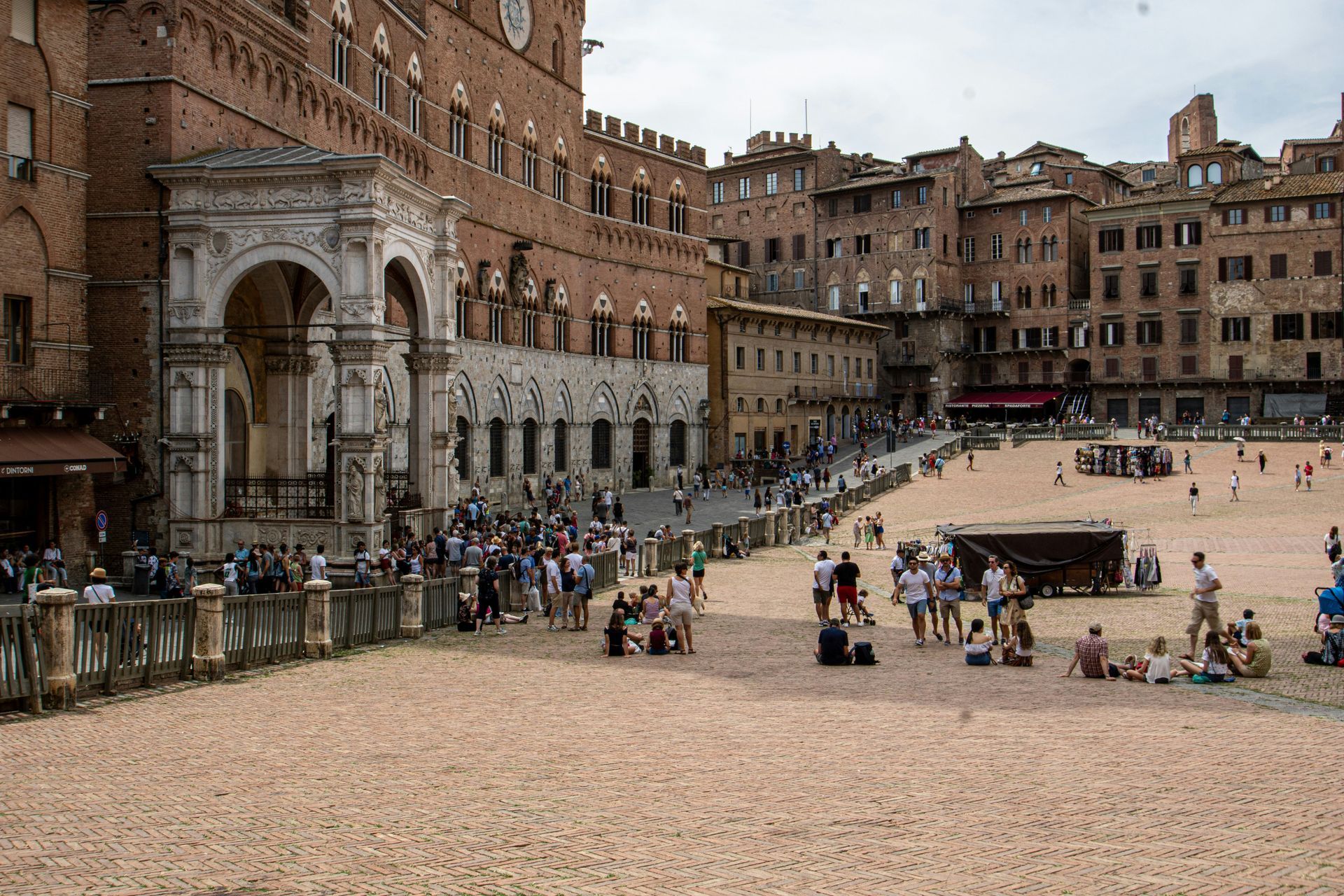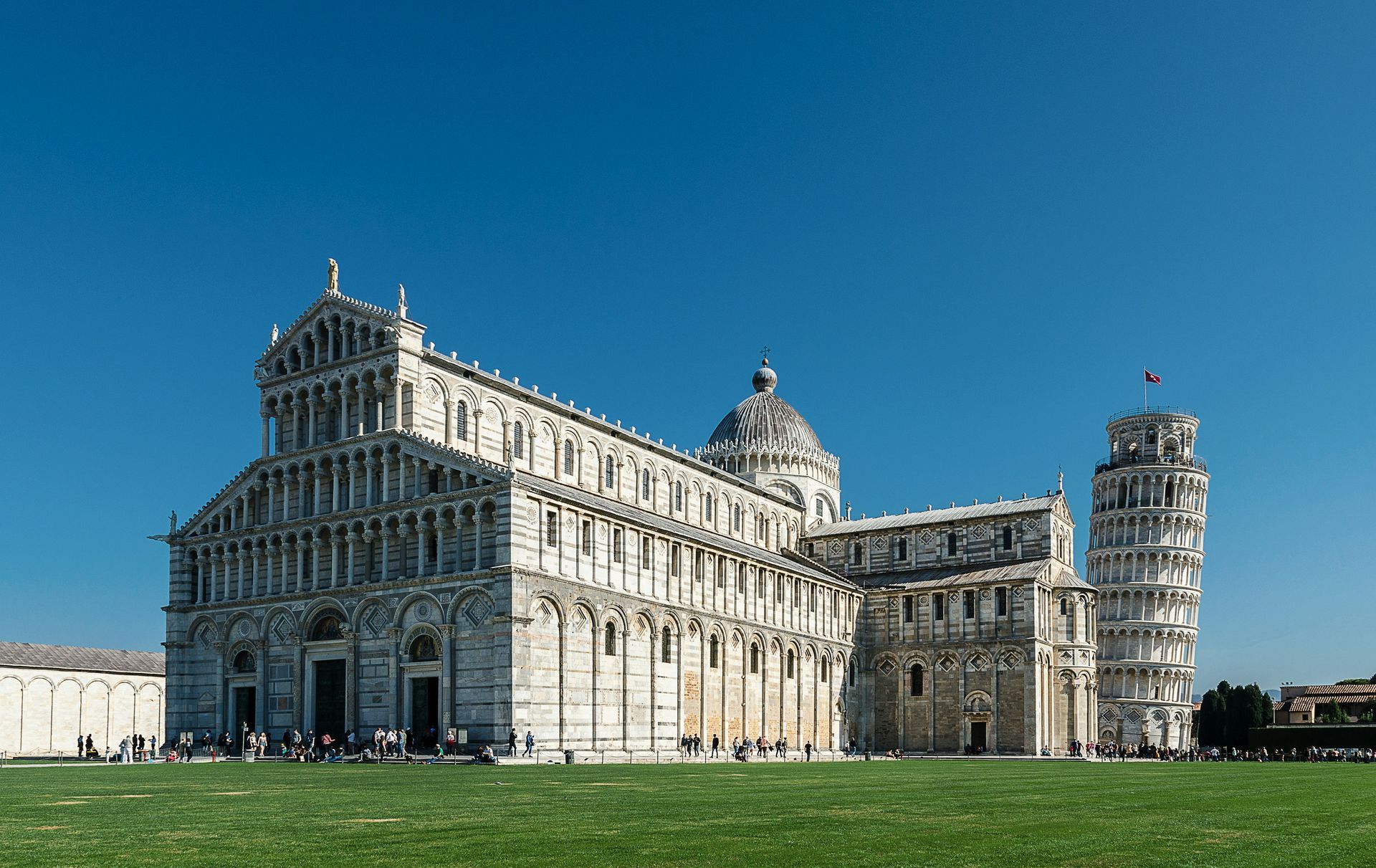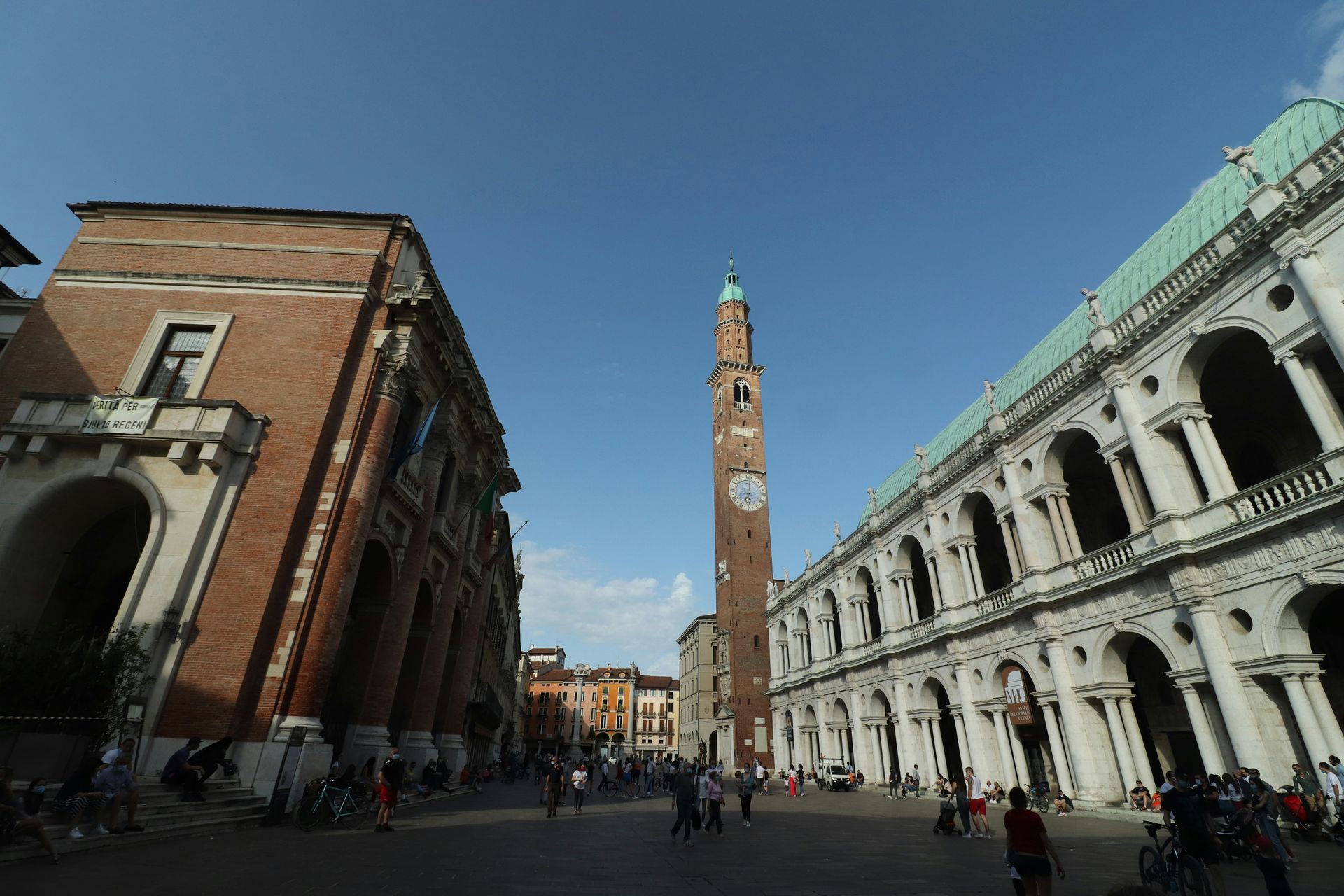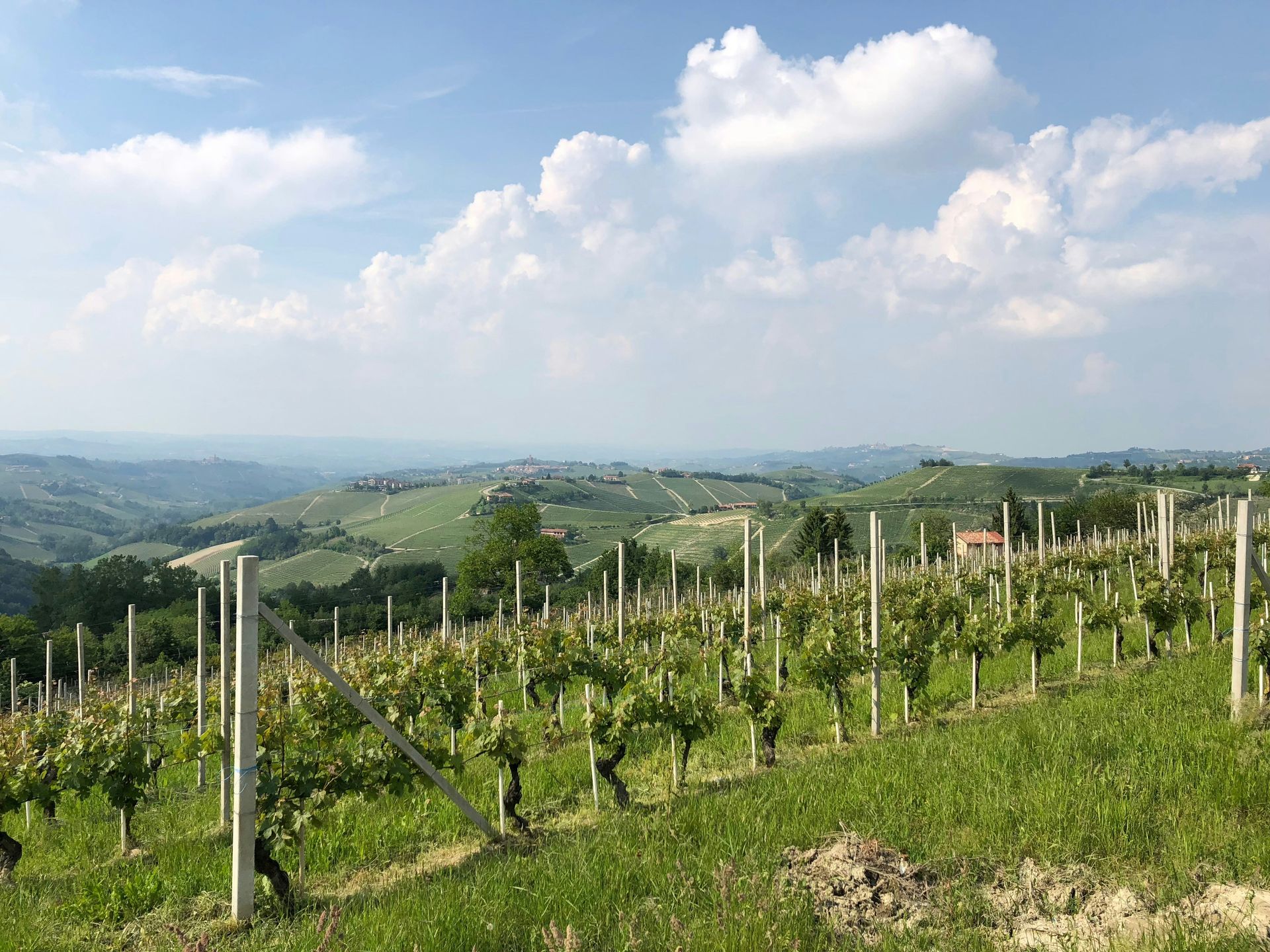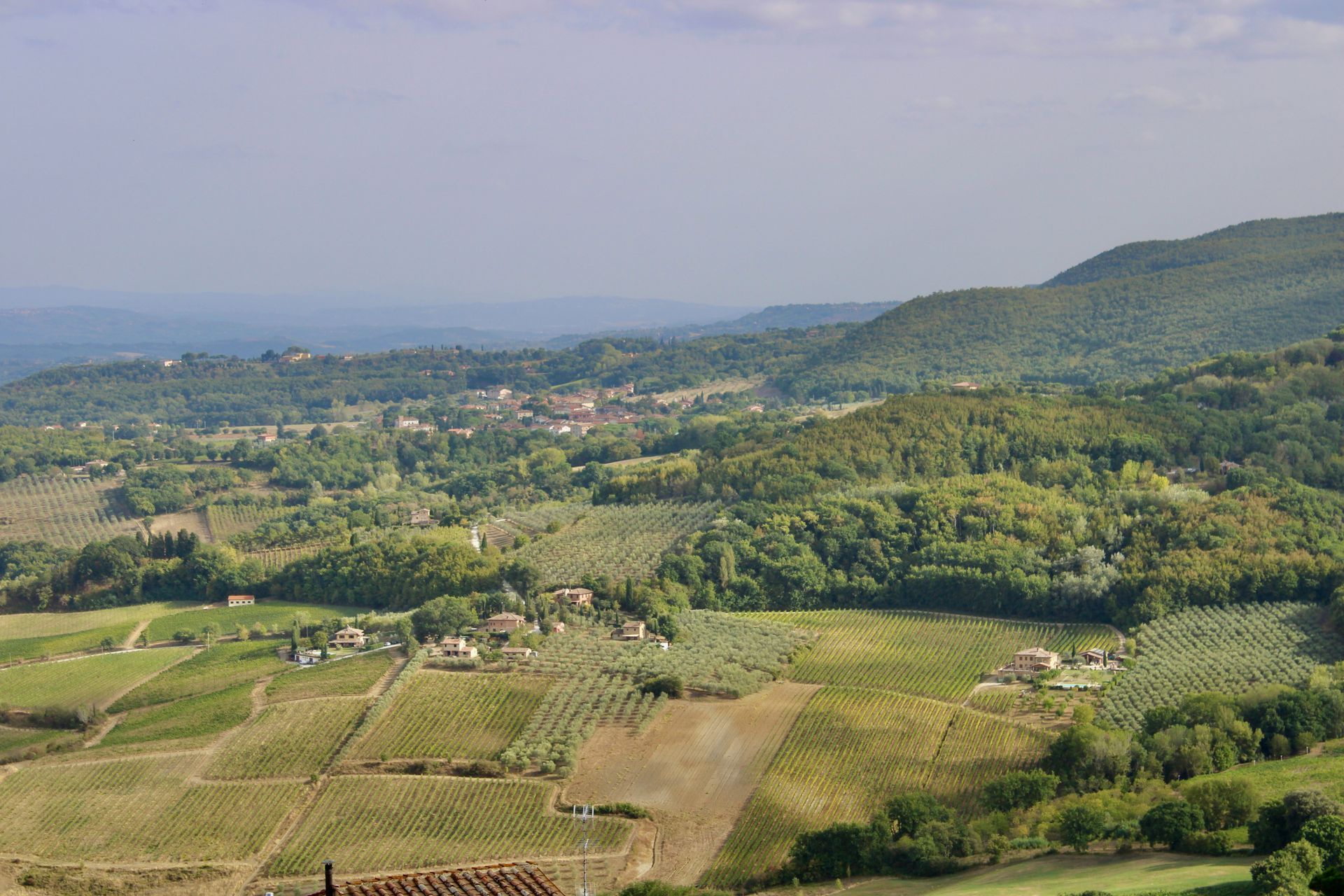Spreading Smile across the globe
Hidden Gems of Northern Italy
Hidden Gems of Italy are a testament to the country's diverse and enchanting beauty, often concealed from the traditional tourist routes. While Italy is celebrated for its iconic cities like Rome, Florence, Venice, and the Amalfi and Cinque Terre coasts, it's the lesser-known destinations that promise a unique journey. These unexplored regions offer travellers a chance to experience Italy's authentic culinary delights, rich historical narratives, and stunning natural landscapes. From the northern reaches to the southern shores, these Hidden Gems of Italy reveal a different facet of this remarkable nation.
Lake Orta - Piedmont
Hidden Gems of Italy come to life at Lake Orta, tucked away near the Swiss border in the heart of Piedmont. This hidden paradise often evades the spotlight compared to its more famous counterparts like Lake Como and Lake Garda. The historic town of Orta San Giulio, with its Baroque and Medieval architecture, cobbled streets, and idyllic Piazza Motta, enchants visitors. The glistening waters of the lake itself invite moments of serenity. What makes Lake Orta truly extraordinary is the mysterious island at its centre—a tranquil sanctuary inhabited by resident nuns.
Treviso - Veneto
Among the Hidden Gems of Italy, Treviso stands as a city in the Veneto region that retains its genuine northern Italian charm. Meandering through its narrow cobbled lanes, picturesque canals, and medieval city walls feels like a step back. Positioned on the fringes of the renowned Prosecco wine region, Treviso provides a delightful excuse for an aperitivo with a glass of Italy's renowned sparkling Prosecco.
Aosta Valley
Nestled among the bordering landscapes of Switzerland and France, the Aosta Valley showcases breathtaking alpine scenery, perched castles, and traditions that thrive throughout the year. When spring and summer arrive, the region's walking trails entice explorers. This season also brings lively festivals that celebrate folk traditions that date back to medieval times. Be sure to savour the local cheese Fontina, a culinary delight that embodies the spirit of this Hidden Gem of Italy.
Alba - Piedmont
Alba, a sought-after destination among Italy's hidden gems, is situated in the vineyards of the Langhe Hills. Once adorned with a hundred towers, Alba exudes a charming rural ambience. It's renowned for its autumn truffle festival, a gastronomic event that captures the essence of the region. Alba is also celebrated for its dark chocolate, hazelnut groves, white truffles, and prestigious wineries. It's from this very region that the sought-after Barolo wine originates.
Camogli - Liguria
Camogli, a typical and vibrant Italian seaside village on the Ligurian Riviera di Levante, perfectly embodies the spirit of the Hidden Gems of Italy. Towering, brightly painted houses dominate the town, and it has become a magnet for visitors seeking pristine beaches, Ligurian cuisine, the rustic fishing marina, Italian culture, and a tranquil natural setting. Camogli has earned its reputation for culinary excellence, focusing on fish and seafood, particularly anchovies and tuna, as well as the iconic pesto sauce made from basil and pine nuts.
Brescia - Lombardy
Hidden Gems of Italy often come alive through history, and Brescia is no exception. In this small city, history unfolds through a tapestry of architectural styles, spanning Roman, Medieval, Renaissance, Baroque, and even Art Deco. Walking through Brescia feels like a journey through time, and a visit to the captivating Piazza della Loggia, framed by a stunning Venetian-style palace at its heart, is a must for history enthusiasts.
Trieste
Trieste is a refreshingly unique destination, an Italian city positioned near the Slovenian border with its dialect that's a delightful blend of Austrian-German, Greek, Croatian, and Italian. Trieste's neoclassical waterfront is a sight to behold, with its marina brimming with stylish, glimmering yachts. The city's offerings include clear blue skies, expansive sandy beaches, city lidos, and the surrounding vineyards. Trieste is a Hidden Gem of Italy that belongs on every traveller's Northern Italian itinerary.
Modena - Emilia-Romagna
Modena is famed for its Hidden Gems of Italy, including balsamic vinegar, Luciano Pavarotti, the Romanesque cathedral, and the nearby Ferrari museum. Beyond these illustrious attractions, Modena reveals a treasure trove of remarkable restaurants. Massimo Bottura's Osteria Francescana has twice earned a place among the world's top 50 eateries, showcasing the culinary excellence of this Hidden Gem. While in Modena, don't miss the chance to savour local specialities like stuffed tortellini and sparkling Lambrusco wine, the perfect complement to your gastronomic journey.
Chiusa / Klausen - South Tyrol
Chiusa, also known as Klausen, is one of Italy's most picturesque villages. It is situated on the banks of the Isarco River in the South Tyrolean region near the Austrian border. Chestnut groves, green fields, vineyards, and farmsteads surround the town. In the village itself, visitors are captivated by narrow alleyways, coats of arms, large bay windows, crenellated facades, and the two main squares.
Ravenna - Emilia-Romagna
Ravenna offers a treasure trove of experiences among the Hidden Gems of Italy. This city is a feast for the senses, with its diverse offerings of food, music, art, culture, history, beaches, wine, and mosaics. Ravenna is home to eight UNESCO-listed sites, making it a must-visit for history and art enthusiasts. It's also known for its two-month-long music festival, Dante Alighieri's tomb, local culinary delights, nearby beach resorts, and the opportunity to explore pinewood forests. The city's fame is derived from its stunning mosaics, dating from the fifth and sixth centuries, scattered throughout the town.
In conclusion, Italy's Hidden Gems invite you to embark on a journey less travelled, where the rich tapestry of history, diverse cuisine, and breathtaking landscapes come to life. These lesser-known destinations provide an authentic Italian experience, away from the bustling crowds, revealing the nation's soul in its purest form. Explore these Hidden Gems to uncover Italy's hidden treasures.
Hidden Gems of Central Italy
Hidden Gems of Italy beckon the adventurous traveller to explore the lesser-known treasures that this remarkable country holds. From the picturesque valleys of Tuscany to the medieval charm of Umbria, the mysterious landscapes of Molise, and the architectural wonders of San Gimignano, these destinations promise unforgettable experiences.
Garfagnana - Tuscany
The Garfagnana region is a hidden gem in the beautiful Tuscan valley north of Lucca. It is crossed by the Serchio River, and the landscape is characterized by fertile greenery, rugged mountains, and charming villages. Outdoor activities such as hiking, walking, and mountain biking are enjoyed by many people in this area. Garfagnana is home to several one-of-a-kind attractions, including a ghost town, a wind cave, and the Devil's Bridge at Borgo a Mozzano.
Gubbio - Umbria
Umbria hides many treasures, and a particular favourite among Hidden Gems of Italy is the Medieval hilltop town of Gubbio. Gubbio, a city with a history dating back over 2,000 years, is a maze of cobbled streets and stone buildings that have been perfectly preserved. Visitors can take a cable car to the summit of Mount Ingino to enjoy panoramic views of the surrounding area. In addition, Gubbio hosts Italy's oldest event, the Corsa dei Ceri, in which teams race through the streets carrying massive wooden candles.
Molise
Molise is Italy's second-smallest region and one of its best-kept secrets. Hidden Gems of Italy are plentiful here. The picturesque town of Agnone is renowned for its artisanal bells, produced by the oldest family-run bell foundry in the world. Meanwhile, Campobasso, the regional capital, boasts a stunning medieval old town. Molise offers a captivating mix of historical charm and natural beauty, with rugged mountains, rolling hills, and pristine beaches along the Adriatic coast.
San Gimignano - Tuscany
Nestled in the heart of Tuscany, San Gimignano boasts medieval architecture and, of course, its famous towers. The town's historic centre is a UNESCO World Heritage site, known for its fourteen stone towers that once symbolised wealth and power. San Gimignano offers a glimpse into medieval Tuscany, with well-preserved streets and squares that transport visitors to another time. Besides the towers, make sure to explore the Collegiate Church and indulge in the local Vernaccia wine, a crisp white wine produced in the region.
Spello - Umbria
Another gem in the heart of Italy, Spello enchants visitors with its winding medieval streets and stunning floral displays. Known as the "Città Infiorata" or "flower town," Spello hosts the Infiorata festival, during which the streets are carpeted with intricate flower petal designs. This event occurs in early June and is a magnificent spectacle. Outside of the festival, Spello's charm continues with its well-preserved historic centre and beautiful churches.
Trulli of Alberobello - Apulia
Apulia, or Puglia, is famous for its unique trulli houses, and Alberobello is the epicentre of this architectural marvel. These whitewashed conical homes are a UNESCO World Heritage Site that offers a glimpse into the region's history. Visitors can even stay in trulli that have been converted into accommodations, providing a truly immersive experience.
Norcia - Umbria
Nestled in the Sibillini Mountains, Norcia is renowned for its gastronomy. This charming town produces exceptional cured meats, particularly prosciutto and salami. For food enthusiasts, Norcia is a true Hidden Gem of Italy. Explore local shops, taste the region's specialities, and visit the beautiful town square. Nature enthusiasts will also find hiking trails and natural beauty in the nearby Monti Sibillini National Park.
Montefalco - Umbria
Montefalco is often called the "Balcony of Umbria" for its stunning views over the surrounding valley. This charming town is also known for its wine, particularly Sagrantino, one of Italy's most robust red wines. Montefalco's medieval centre is picturesque and hosts several churches with remarkable frescoes, making it a cultural and gastronomic gem.
Castelluccio di Norcia - Umbria
High in the Sibillini Mountains, Castelluccio di Norcia is a quaint village known for its stunning wildflower blooms in late spring and early summer. The surrounding plateau becomes a colourful tapestry, attracting photographers and nature enthusiasts. Besides the flowers, visitors can enjoy hiking and take in the breathtaking scenery. Hidden Gems of Italy like Castelluccio di Norcia provide a unique connection to nature and the changing seasons.
In the heart of Italy, a treasury of Hidden Gems awaits the intrepid traveller. From the mysterious ghost town of Garfagnana to the ancient charms of Gubbio, the enchanting landscapes of Molise, and the medieval splendours of San Gimignano, these lesser-known destinations reveal Italy's diverse beauty and rich history. Journey through the tranquil streets of Spello, marvel at the unique trulli houses in Alberobello, savour the culinary delights of Norcia, and bask in the vibrant blooms of Castelluccio di Norcia. These Hidden Gems of Italy promise an unforgettable adventure in a land of timeless wonder.
Hidden Gems of Southern Italy
Italy, a land of rich history, captivating art, and exquisite cuisine, is known for its iconic cities and world-famous landmarks. Despite the tourist-filled streets and crowded piazzas, the country holds many hidden gems—lesser-known destinations that offer a more intimate and authentic experience. These places, tucked away in various corners of Italy, are a testament to the nation's diverse and enchanting beauty, waiting to be explored by the discerning traveller. From medieval towns perched atop hills to charming coastal villages and ancient archaeological sites, the Hidden Gems of Italy promise unique adventures and unforgettable memories.
Civita di Bagnoregio - Lazio
Civita di Bagnoregio is often called the "Dying Town" because of its gradual erosion over the centuries. This medieval village is perched on a hilltop and can only be reached by a long footbridge. It's a unique destination, seemingly suspended in time, and is the perfect Hidden Gem for history buffs and photographers.
Matera - Basilicata
Matera, known for its cave dwellings, is one of Italy's most intriguing and unique destinations. The Sassi di Matera, a historic cave settlement, is a UNESCO World Heritage Site. Matera is gaining popularity but still qualifies as one of the Hidden Gems of Italy. Touring this labyrinth of stone-carved rooms and narrow streets offers an incredible historical journey.
Sperlonga - Lazio
Sperlonga is a charming coastal town characterized by its pristine beaches, winding alleys, and picturesque piazzas. Nestled between Rome and Naples, Sperlonga is often overlooked by travellers. A visit here reveals a relaxed and authentic Italian atmosphere, perfect for strolls and seaside relaxation. Take advantage of the Grotto of Tiberius, a cave once used as the emperor's villa and now a museum.
Paestum - Campania
The ancient ruins of Paestum, originally a Greek colony known as Poseidonia, provide an extraordinary window into Italy's history. The temples are exceptionally well-preserved, ranking among the best-preserved in the world. Paestum is also home to a fascinating archaeological museum that displays artefacts from the site. Enjoy a step back in time amid the Hidden Gems of Italy.
Castro - Apulia
Castro, a picturesque coastal town, boasts a historic centre perched on a rocky outcrop. Visitors can explore ancient churches, fortifications, and a charming harbour. Castro also has sea caves that can be explored by boat. The region's cuisine is a seafood lover's paradise, making this town a Hidden Gem for food enthusiasts as well.
Scilla - Calabria
Scilla, an idyllic coastal village in Calabria, offers stunning sea views and hidden beaches. The town is known for the Ruffo Castle, which dominates the landscape, and the legendary sea monster Scylla from Greek mythology. The charming village is a serene and lesser-known alternative to some of the more crowded Italian seaside destinations.
San Marino
San Marino is a microstate surrounded by Italy and is one of the world's oldest republics. It's a destination that's often missed, making it a true Hidden Gem. San Marino boasts dramatic mountaintop views, historic architecture, and unique attractions like the Guaita Tower and the Palazzo Pubblico. For collectors, the country is also known for its beautiful stamps and coins.
Conclusion
Discovering the Allure of Hidden Gems of Italy
Hidden Gems of Italy offers travellers an authentic experience, far removed from the tourist-packed cities and famous landmarks. These lesser-known destinations unravel the genuine charm, culture, history, and culinary wonders that make Italy an endlessly fascinating country to explore. From the mountains of the North to the coasts of the South, each region holds its treasures, waiting to be discovered by those who venture off the beaten path. By exploring the Hidden Gems of Italy, you can craft a unique and unforgettable journey that deepens your appreciation of this incredible country. Plan your trip carefully, and you will be rewarded with the beauty, history, and flavours that characterize these enchanting places.
Exploring Italy UNESCO World Heritage Sites
Embark on a journey through time and cultural richness as we delve into the profound tapestry of Italy UNESCO World Heritage Sites. Italy, a cradle of civilization, boasts a remarkable array of cultural, historical, and natural wonders recognized and preserved by UNESCO. From the iconic Colosseum in Rome to the magnificent Amalfi Coast, each site tells a story of Italy's profound influence on art, architecture, and humanity. The distinct charm of Venice and the grandeur of the Leaning Tower of Pisa are but glimpses into a heritage that spans millennia.
Join us as we unravel the threads of Italy UNESCO World Heritage Sites, exploring the unparalleled legacy that has shaped the world's perception of beauty, culture, and heritage. This journey promises not only to be a visual feast but a profound exploration of the soul of a nation whose heritage is as diverse and captivating as the landscapes that cradle these extraordinary sites.
Pompeii
Unearth the ancient city frozen in time at Pompeii, an archaeological marvel celebrated among Italy UNESCO World Heritage Sites. Once a thriving Roman city, Pompeii succumbed to the catastrophic eruption of Mount Vesuvius in 79 AD, preserving its streets, homes, and daily life for future generations. Strolling through its hauntingly preserved ruins, you'll witness the remarkably preserved amphitheater, intricate frescoes, and the poignant casts of citizens caught in the disaster. Pompeii is more than a site; it's a portal into the daily existence of an ancient society, offering a tangible connection to the past that transcends the pages of history books. As you traverse the cobblestone streets, the echoes of Pompeii's vibrant past resonate, inviting you to contemplate the fragility and resilience of civilizations throughout time.
Rome
Step into the eternal city of Rome, a living testament to history and a jewel in the crown of Italy UNESCO World Heritage Sites. From the magnificent Colosseum, witness to gladiator spectacles, to the renowned Roman Forum, the ancient city's political and commercial nucleus, each cobblestone narrates a compelling tale. Marvel at the grandeur of the Pantheon, a marvel of engineering and architectural prowess, and toss a coin into the Trevi Fountain to ensure your return. As you wander through the Vatican City, a separate UNESCO-listed enclave within Rome, the Sistine Chapel's ceiling painted by Michelangelo and the majesty of St. Peter's Basilica will leave an indelible imprint on your soul. Rome, with its rich tapestry of monuments and culture, stands as a living canvas, inviting you to walk in the footsteps of emperors and gladiators, offering a profound encounter with the roots of Western civilization. Every bend in the road unveils a fresh chapter of the city's rich history, seamlessly intertwining the ancient with the modern in a mesmerizing dance that enchants every visitor.
Siena
Nestled in the heart of Tuscany, Siena stands as a living testament to Italy UNESCO World Heritage Sites, a cityscape frozen in time. The historic center of Siena, a medieval masterpiece, is a marvel of urban planning and architectural integrity. The Piazza del Campo, a shell-shaped square, is home to the iconic Palazzo Pubblico and the soaring Torre del Mangia, both testaments to Siena's civic and artistic achievements. The city's cathedral, Santa Maria Assunta, showcases stunning Gothic architecture and is adorned with masterpieces by Italian artists. As you meander along the narrow, meandering streets, the medieval atmosphere surrounds you, softly narrating stories of the city's illustrious history. Siena, a treasure trove of art and culture, provides an immersive experience into the soul of Italy, inviting you to explore its UNESCO-protected heritage, where every brick and stone recounts the story of a bygone era. The spirit of the Palio di Siena, a historic horse race held in the city's heart, adds to the vibrant cultural mosaic, making Siena an indelible part of Italy's rich cultural legacy.
San Gimignano
Nestled within the picturesque landscapes of Tuscany, San Gimignano is a jewel among Italy UNESCO World Heritage Sites. Renowned for its medieval towers that pierce the skyline, this charming hilltop town offers a captivating glimpse into Italy's rich cultural and architectural legacy. The skyline, adorned with fourteen stone towers, harks back to a bygone era when noble families sought to outdo each other in building the tallest towers as symbols of prestige. Strolling through the well-preserved streets, you'll encounter historic buildings, medieval squares, and artisan shops that transport you to a time of flourishing art and commerce.
The historic center, a UNESCO-protected site, encapsulates the essence of medieval urban planning, with its narrow streets leading to the heart of Piazza della Cisterna. Here, the iconic well and ancient stone structures set the stage for the town's vibrant social life. The Collegiate Church of Santa Maria Assunta, adorned with frescoes and artistic treasures, stands as a testament to San Gimignano's cultural richness.
As you explore the cobblestone streets and absorb the panoramic views of the Tuscan countryside, San Gimignano unveils a tapestry of history, art, and architectural marvels, leaving an indelible mark on those who seek the enchantment of Italy UNESCO World Heritage Sites.
Assisi
Nestled on the serene hills of Umbria, Assisi stands as a timeless testament to Italy UNESCO World Heritage Sites. This medieval town, with its ancient charm and spiritual significance, captivates visitors from around the world. Home to the illustrious Basilica of San Francesco d'Assisi, this sacred site is an architectural masterpiece and a spiritual sanctuary. The basilica houses priceless frescoes by Giotto and Cimabue, depicting the life of Saint Francis, the town's revered patron saint.
As you wander through the narrow streets, the medieval atmosphere of Assisi transports you to an era of faith, art, and cultural richness. The town's UNESCO recognition extends beyond the basilica to include the historic center, a harmonious blend of medieval and Roman architecture. The formidable Rocca Maggiore, a medieval fortress, presents sweeping vistas of the encompassing countryside, offering insight into the town's historical significance and strategic role.
Assisi, with its rich tapestry of history and spirituality, invites travelers to delve into the soul of Italy's cultural heritage. The UNESCO World Heritage designation recognizes not just the architectural treasures but also the enduring spirit that permeates this sacred town.
Piazza del Duomo, Pisa
Nestled in the center of Pisa, the renowned Piazza del Duomo, or Square of Miracles, shines as a gem among Italy's UNESCO World Heritage Sites. This hallowed square boasts a collection of the globe's most extraordinary architectural marvels, such as the iconic Leaning Tower of Pisa, the grand Pisa Cathedral, the Baptistery, and the Camposanto Monumentale.
The Leaning Tower of Pisa, with its distinctive tilt, is a global symbol of architectural audacity and attracts visitors from every corner of the globe. The neighboring Pisa Cathedral, a pinnacle of Romanesque architectural excellence, showcases elaborate marble exteriors and captivating interior intricacies. The Baptistery, renowned for its acoustics, and the Camposanto Monumentale, a monumental cemetery, complete this ensemble of exceptional medieval art and architecture.
This UNESCO recognition celebrates not only the individual marvels of Piazza del Duomo but also the harmonious ensemble they create. The Square of Miracles invites visitors to marvel at the intersection of art, history, and cultural significance, making it an indispensable destination for those seeking to explore Italy's rich heritage.
Vicenza
Vicenza, a city steeped in architectural brilliance, proudly holds a distinguished place among Italy UNESCO World Heritage Sites. The historic center of Vicenza, designed primarily by the renowned architect Andrea Palladio during the 16th century, showcases a remarkable blend of classical elements, symmetry, and innovative designs.
Palladio's architectural masterpieces, such as the Basilica Palladiana with its iconic Palladian windows, the Teatro Olimpico, the Palazzo Chiericati, and the Villa Rotonda, contribute to Vicenza's UNESCO recognition. These structures embody the principles of Palladian architecture, influencing generations of architects worldwide.
Visitors to Vicenza are transported through time as they stroll along the city's cobblestone streets, encountering these timeless treasures. The Basilica Palladiana, in particular, dominates the central square with its elegant façade, symbolizing the city's cultural and artistic significance. Vicenza's UNESCO status not only preserves its architectural heritage but also invites admirers to revel in the genius of Palladio's contributions, making it an essential destination for lovers of classical art and design.
Vineyard Landscape of Piedmont
Nestled in the northwest of Italy, the Vineyard Landscape of Piedmont stands as a testament to the region's rich winemaking traditions, earning its well-deserved place among Italy UNESCO World Heritage Sites. This cultural landscape, shaped by centuries of human cultivation, showcases the intricate harmony between nature and viticulture.
The undulating hills of Piedmont are adorned with meticulously arranged vineyards, producing some of Italy's finest wines, including Barolo and Barbaresco. The landscape is dotted with charming villages and historic castles, contributing to the overall picturesque allure.
The Vineyard Landscape of Piedmont reflects not only the artistry of winemaking but also the deep cultural roots embedded in the region. Visitors wandering through the vine-covered hillsides are treated to panoramic views, exquisite flavors, and a profound appreciation for the dedication that goes into every bottle.
Exploring this UNESCO-listed site offers a unique opportunity to delve into the history and craftsmanship of Piedmontese winemaking, making it a must-visit destination for wine enthusiasts and those seeking to immerse themselves in the cultural tapestry of Italy.
Ravenna
Discover the captivating city of Ravenna, a jewel in Italy UNESCO World Heritage Sites crown. Nestled in the Emilia-Romagna region, Ravenna is a treasure trove of exquisite Byzantine mosaics and historical significance. Renowned for its eight early Christian monuments, including the stunning Basilica of San Vitale and the Mausoleum of Galla Placidia, Ravenna transports visitors to a time when the city was a hub of political and artistic power.
Wander through its UNESCO-listed sites, where intricate mosaics depicting biblical scenes and vibrant geometric patterns adorn the interiors. Every mosaic serves as evidence of Ravenna's cultural opulence and its significance as the capital of the Western Roman Empire during the 5th century.
Ravenna's UNESCO status underscores its contribution to the world's cultural heritage, preserving a legacy that spans architecture, art, and history. While navigating the atmospheric streets of the city, you'll be enveloped in the charm of Ravenna's history, where every mosaic murmurs tales of a distant era, encouraging you to uncover the secrets of this captivating UNESCO-listed locale.
Pienza
Nestled in the heart of Tuscany, Pienza, one of the Italy UNESCO World Heritage Site, enchants visitors with its timeless charm and architectural brilliance. This small Renaissance town, conceived by Pope Pius II in the 15th century, stands as a testament to humanist urban planning and the pursuit of aesthetic perfection.
Pienza's historic center is a masterpiece of harmonious design, featuring well-proportioned buildings, charming piazzas, and splendid palaces. The town offers breathtaking views of the surrounding Val d'Orcia, a landscape celebrated for its rolling hills, vineyards, and cypress trees.
Exploring Pienza is like stepping back in time, where every cobblestone street tells a story of art, culture, and the pursuit of beauty. The town's cathedral, Palazzo Piccolomini, and the central Piazza Pio II are iconic landmarks that showcase the Renaissance ideals of balance and proportion.
Pienza's inclusion in UNESCO's list recognizes its contribution to human creativity and the enduring legacy of Renaissance urban planning. Visiting Pienza is not just a journey through history; it's an immersion into the timeless beauty that defines Italy's cultural heritage.
Conclusion:
In conclusion, Italy UNESCO World Heritage Sites form a remarkable tapestry woven with threads of history, art, and cultural richness. From the ancient ruins of Pompeii to the architectural marvels of Rome, the enchanting landscapes of Tuscany to the mesmerizing mosaics of Ravenna, each site bears witness to Italy's enduring legacy.
These designated treasures not only showcase Italy's unparalleled contributions to human civilization but also serve as windows into different epochs, inviting visitors to traverse the corridors of time. As custodians of Italy's diverse heritage, these UNESCO-listed sites stand as guardians of stories, traditions, and artistic achievements that have shaped the nation's identity.
Whether you seek the grandeur of Rome's historic center or the quiet beauty of Pienza's Renaissance architecture, Italy UNESCO sites promise a journey through epochs and a celebration of human ingenuity. They are not mere landmarks but living testaments to the enduring spirit of a country that continues to weave its cultural tapestry with threads of excellence and creativity. Exploring Italy UNESCO World Heritage Sites is an odyssey through time, an immersion in beauty, and an encounter with the soul of a nation that has left an indelible mark on the world's cultural map.
Things To Do | Travel Information | Local's Favourites




